Skip to comments.
Education in the United States
astorehouseofknowledge.info ^
| 2015
| daniel1212
Posted on 06/17/2024 6:45:27 AM PDT by daniel1212
For almost 400 years America has seen its citizens educating their children and themselves, though both the scope, structure and quality of education has changed somewhat during that time.
For much of the history of the United States, education of children took place primarily at home, often along with private schools for some, and locally managed and supported schools for others. Education included the general ethos of Christianity and Biblical morality as well as academic subjects. The New England Primer and later, the nation-wide McGuffey's Readers (120+ million copies) were the primary instruments of education, and in helping to form the basic character of the nation. In Colonial America, male literacy appears to have been very high, with self-education being expected, and with relatively inexpensive means being provided to do so.
The Massachusetts School Law of 1642 required education by parents or custodians, and for a type of reform schooling for the disorderly. By 1890, a nationwide system of common schools accessible to almost all, had been realized, with thousands of local schools and nearly one thousand colleges and universities. 95 percent of children between the ages of five and thirteen were enrolled for at least a few months out of the year, though less than 5 percent of adolescents went to high school, and even fewer entered college. Such higher education was not a prerequisite for upward mobility in this era.
Education during this period was yet largely locally managed, with relatively small administration, yet a remarkable uniformity was seen among the nation's schools, both in inculcating morality and the teaching of educational subjects.
Federal funding and control progressively increased, as did the curriculum, but with a decreasing emphasis upon traditional morality. School-led prayer and Bible reading were outlawed in 1962 and 1963, respectively, which many see as contributing to, or being a symptom of, a nationwide decline in morality.
Early American education
While widespread free and inclusive primary public schooling would not begin in America until the late 1800's, the first public school in America was founded April 23, 1635 in Boston, Mass. Boston Latin School was begun by the Puritan preacher John Cotton, who modeled the school after the Free Grammar School in Boston, England, which taught Latin and Greek, these being languages which copies of Biblical manuscripts were written in. The school was publicly funded, with the first classes being held in the home of the schoolmaster Philemon Pormort. Five of the 56 signers of the U.S. Constitution attended Boston Latin: Benjamin Franklin, John Hancock, Robert Treat Paine, Samuel Adams, and William Hooper.[1]
Much due to the Protestant belief that lay people should learn to read the Bible, many colonists pushed for literacy. In 1642, the Massachusetts School Law required that parents and master saw to it that their children could read English and knew the principles of religion and the capital laws of the commonwealth. If any parents were unable to "catechize their children and servants in the grounds and principles of Religion" once a week (at the least), then they were to procure some short orthodox catechism for them to learn from, and to answers question put to them from it by their parents or masters and the Select men when they were tested. In addition, children who could not be made fit for higher employments were to be taught some honest lawful trade profitable for themselves and the Commonwealth. The law also instructed that if the Select men found that parents and masters grew lax in their responsibility and thus their children became "rude, stubborn and unruly," then the government (the Select men with law enforcement) would be obligated to remove such children from the home and place them in a type of reform school where they could receive adequate instruction.
In 1647 the Massachusetts colonial legislature commented that as the "old deluder Satan" had worked to keep the Bible (in the vernacular) from the people in the times before the Protestant Reformation, they passed a law (also known as the Old Deluder Satan Act) that towns of over 50 families should provide a school.[2]
The Puritan preacher Cotton Mather (1663 – 1728) wrote,
A Good School deserves to be call'd, the very Salt of the Town, that hath it:..wherein the Youth may by able Masters be Taught the Things that are necessary to qualify them for future Serviceableness, and have their Manners therewithal well-formed under a Laudable Discipline, and be over and above Well-Catechised in the principles of Religion, Those would be a Glory of our Land, and the preservatives of all other Glory.
When the REFORMATION began in Europe an hundred and fourscore years ago, to Erect Schools everywhere was one principal concern of the Glorious and Heroic Reformers; and it was a common thing even for Little Villages of Twenty or Thirty Families, in the midst of all their Charges, and their Dangers, to maintain one of them. The Colonies of New England were planted on the Design of pursuing that Holy Reformation; and now the Devil cannot give a greater Blow to the Reformation among us, than by causing Schools to Languish under Discouragements....But we shall never long retain the Gospel, without the help of Learning. And if we should have no Regard unto religion, even the outward prosperity of a people, in this World would necessarily require Schools and Learned.[3]
However, education was mainly considered to be a local, or a family responsibility, often using private schools, rather than being an duty of the State. Ralph Walker, author of Old Readers, believes that in this period "children were often taught to read at home before they were subjected to the rigours of school. In middle-class families, where the mother would be expected to be literate, this was considered part of her duties.[4]
In Puritan New England this seems to have been particularly evidenced. In The Intellectual Life of New England Samuel Eliot Morison notes that Boston Latin was "the only public school down to 1684, when a writing school was established; and it is probable that only children who already read were admitted to that . . . . they must have learned to read somehow, since there is no evidence of unusual illiteracy in the town. And a Boston bookseller’s stock in 1700 includes no less than eleven dozen spellers and sixty-one dozen primers." [5]
While Congress declared in the Land Ordinance of 1785 that a section of every township which was surveyed in the public lands in the western territories was to be set aside for the maintenance of public schools, and a similar provision was made in the the Northwest Ordinance of 1787 for the Great Lakes and Ohio Valley regions, neither ordinance was fully implemented.[6]
Robert A Peterson[7] argues,
For two hundred years in American history, from the mid-1600s to the mid-1800s,...America produced several generations of highly skilled and literate men and women who laid the foundation for a nation dedicated to the principles of freedom and self-government.
The private system of education in which our forefathers were educated included home, school, church, voluntary associations such as library companies and philosophical societies, circulating libraries, apprenticeships, and private study. It was a system supported primarily by those who bought the services of education, and by private benefactors. All was done without compulsion. Although there was a veneer of government involvement in some colonies, such as in Puritan Massachusetts, early American education was essentially based on the principle of voluntarism.[8]
Peter Augustine Lawler also writes,
The citizens of New England took care of the poor, maintained the highways, kept careful records and registries, secured law and order, and, most of all, provided public education for everyone—through high school when possible. The justification of universal education was that everyone should be able to read the Bible to know the truth about God and his duties to Him for himself. Nobody should be deceived by having to rely on the word of others; they had the democratic or Cartesian distrust of authority without the paralyzing and disorienting rejection of all authority (DA.2.1.1) That egalitarian religious understanding, of course, was the source of the American popular enlightenment that had so many practical benefits.[9]
Libraries with good books contributed to the literacy of the average American. Desire for books brought a large number of libraries into existence. These included church libraries, which were supported primarily by voluntarism. Non-private, non-church libraries in America were first maintained by membership fees, and by gifts of books and money from private benefactors interested in education. Entrepreneurs also served to fulfill the desire for self-improvement by colonial Americans, providing new services and innovative ways to sell or rent printed matter. [10] Almanacs (usually mainly consisting of miscellaneous information and collections of religious and moral sayings), primers and law book were the mainstay of printing, with the largest category consisting of books on theology. [11]
According to Benjamin Franklin, the North American libraries alone “have improved the general conversation of Americans, made the common tradesmen and farmers as intelligent as most gentlemen from other countries, and perhaps have contributed in some degree to the stand so generally made throughout the colonies in defense of their privileges.[12]
Some contend that in colonial America literacy rates were as high or higher than they are today.[13] Ruth Wallis Herndon, in Literacy among New England's transient poor, 1750-1800, states that by using different sources, a number of "historians have discovered a nearly universal literacy among New England men and varying levels of literacy among New England women in the latter part of the eighteenth century."[14]
However, nationwide access to education was not universal, and was seen to be insufficient by some.
Development of the common school system
Carl F. Kaestle, professor of education, history, and public policy at Brown University, and source for most of this section,[15][16] discusses Thomas Jefferson and Benjamin Rush, a Philadelphia physician and signer of the Declaration of Independence. Jefferson wrote from France in 1786, advising a friend to "preach a crusade against ignorance," and support free schools in Virginia. In the early national period leaders of this movement for state systems of common schools came from both the Jeffersonian Republicans and the Federalists. Rush proposed a similar bill for free schools in Pennsylvania.
This expansion was rejected, as it seems that most free citizens saw the patchwork colonial mode of education to be quite sufficient. Countryside schools were financed by such means as local taxes, but also typically required some family means of support, while the agrarian nature of the economy often restricted the number of weeks in the school year. In urban areas churches and other philanthropic groups and responded to the need of the poor by establishing free schools for the moral education of poor children, after the model of English "charity" schools.
As time passed and as concern grew, many cities in the new Republic experimented with a type of charity school, the monitorial school, invented by Joseph Lancaster, a Quaker schoolmaster in England which had become popular there and in Europe, and Latin America in the 1810s and ‘20s. This model encouraged the teaching of less advanced students by those who were more advanced.
Support for a common school continued to gain support, and after some hard-fought battles, from 1837 to 1853, "every state legislature in the North passed into law most of the key features of common free school systems. To prevail in these hard-fought battles, common school advocates, working largely through the Whig Party, had to convince a majority of their compatriots that common schools could play a critical role, not just in providing people a more equal chance at education, but in consolidating the country's culture around republican, capitalist, and Protestant values."
However, in the South, "a regionally strong 19th-century Democratic Party, localism, a laissez-faire tradition about education, and a strong belief in a hierarchical society based on slave labor, combined to thwart the more democratic and middle-class values of the region's school reformers. Free common schools would come to the South only in the aftermath of the 1861-65 Civil War", with racial equality in education taking much longer.
Overall, it was not until after the 1940s that a majority of American teenagers graduated from high school, and unlike today, formal education was not a prerequisite for social and economic mobility.[17]
Education circa 1890
By 1890, schools nationwide saw 95 percent of children between the ages of five and thirteen enrolled for at least a few months out of the year, though less than 5 percent of adolescents went to high school, and even fewer entered college.
In addition, while there existed thousands of local schools, nearly one thousand colleges and universities (of varying quality), and scores of normal schools with trained teachers, education was largely locally managed, as the federal bureau of education, while collecting information about the condition of education, possessed no control over local schools. Education agencies on the state level were small, and its few employees had little or no power over local school districts. School systems in large cities could also function with little oversight, such as in Baltimore, where the public schools in 1890 employed only two superintendents for the entire district of 1,200 teachers.
Despite the lack of centralized administration, public schools across America were notably similar, with children learning both the basics of reading, writing, and arithmetic, and the basics of good behavior – the latter being enforced when necessary by corporal punishment. Schools were important community institutions, and reflected the values of of parents and churches, such as honesty, industry, patriotism, responsibility, respect for adults, and courtesy. Memorization, recitation, chants and rhymes were often used in teaching subjects, while solving mathematical problems in one's own head was promoted.
The inculcation of basic education and self-discipline was purposed to promote good moral citizenry, people who would be honestly employed, and make wise and informed choices, and overall progress in an individualistic, competitive and democratic society, and who would contribute to the vitality of their community and country.[18]
Historical nature of education, 1600's - early 1900's
During the colonial period the Bible was “the single most important cultural influence in the lives of Anglo-Americans."[19] Schooling in early America, and for most of its history in primary education, combined education in general Christian morality with standard academic subjects. The Bible was the first book in the classroom, and was central to a child’s education, both for its content and for building skills. Students learned how to read using the Bible, passages were copied to learn penmanship, and a good part of the school day was devoted to memorizing and reciting passages from it.[20] In addition to the Bible, other good books such as Pilgrim’s Progress by John Bunyan and Isaac Watt’s Divine Songs were used.[21]
Early public schools
Records of the Columbia Historical Society, Washington, Volumes 1-2, reports that in the first report of a public school in Washington which they had on file, in 1813 a Mr. Henry Ould states,
55 have learned to read in the Old and New Testaments, and are all able to spell words of three, four, and five syllables; 26 are now learning to read Dr. Watts' Hymns and spell words of two syllables; 10 are learning words of four and five letters. Of 509 out of the whole number admitted that did not know a single letter, 20 can now read the Bible and spell words of three, four, and five syllables, 29 read Dr. Watts' Hymns and spell words of two syllables, and 10 words of four and five letters.”[22]
The Puritan Christian New England Primer was used in New England, which is estimated to have sold upwards to 3,000,000 copies from 1700 to 1850. Introduced in 1690, this reader was used in what now would be the 1st grade, and taught multitudes of children how to read for 200 years, until circa 1900. The alphabet was taught with Bible verses that began with each letter of the alphabet. Lessons had questions about the Bible and the Ten Commandments. An example of the Primer is, A = In Adam's fall, we sinned all. B = Heaven to find, the Bible mind."[23]
In addition, approximately half of all American children learned from the McGuffey Reader, a series of textbooks of which 122 million copies were published (during a time when the population was much less than today, and books were passed on more). The first Reader was published in the 1830's, and was followed by five additional Readers, the last being published in 1885. This was an advanced teaching system for its time, written by William Holmes McGuffey, who later became a Presbyterian minister, and a work which earned him the title, “the Great Schoolmaster of the Nation.” McGuffey believed religion and education were to be interrelated and were essential to a healthy society. McGuffey exalted the Lord Jesus Christ, and used the Bible more than any other source, though the later revised editions (which used McGuffey’s name though he neither contributed to them nor approved their revisions) became more pluralistic in their moral instruction. The Readers were filled with stories of strength, character, goodness and truth, working to instill standards of basic Christian-based morality for more than a century.[24]
McGuffey Readers became the standardized reading text for most schools across the United States, especially throughout the West and South, during the mid to late nineteenth century,[25] [26] and were used widely in America until just after World War I. This resulted in the Readers becoming a unifying force in American culture, giving America a common value-laden body of literary reference and allusion,[27] and “a sense of common experience and of common possession”.[28]
Early elementary schools
The first public elementary schools also taught Christian morality, and even the Unitarian [note 1] Father of the Common School, Horace Mann (4 May 1796 — 2 August 1859), who became Massachusetts Secretary of Education in 1837, evidenced that he rightly understood that the Establishment Clause of the First Amendment did not prohibit officially favoring the general, common Christian faith and its morality, but that it forbade official sanction of one particular sect, such as by sanctioning its doctrinal distinctions, stating that “it may not be easy theoretically, to draw the line between those views of religious truth and of Christian faith which is common to all, and may, therefore, with propriety be inculcated in schools, and those which, being peculiar to individual sects, are therefore by law excluded; still it is believed that no practical difficulty occurs in the conduct of our schools in this regard.”[29]
Mann also understood that the “laws of Massachusetts required the teaching of the basic moral doctrines of Christianity.” To critics who were alarmed at the concept of secular schools, he assured that his system "inculcates all Christian morals; it founds its morals on the basis of religion; it welcomes the religion of the Bible...," but he did exhort that Bible reading be without comment to discourage sectarian bickering.[30]
Mann supported prohibition of alcohol and intemperance, slavery and lotteries, [31] and dreaded “intellectual eminence when separated from virtue”, and that education, if taught without moral responsibilities, would produce more evil than it inherited.[32]
While the use of the Bible as a textbook had declined by the 1820s, the reading of it remained a standard practice in public schools, with the contention between Catholics and Protestants in Philadelphia and New York City during the 1840's being which version should be read, which even resulted in riots.[33]
Collegiate education
Reverence and use of the Bible was also prominent in higher education, with the second requirement of Harvard Universities Lawes of 1642 (after requiring literacy in Latin, which language the Scriptures were then mostly translated into), was that "Every one shall consider the main end of his life and studies to know God and Jesus Christ which is eternal life. (Joh. 17:3)[34]
Overall, the nature of early colleges and universities was religious, and this continued at least until the Civil War. Even State colleges had significant religious (most always Christian) components, such as mandatory religion courses and attendance at chapel services, while large numbers of their faculties had formal religious training. [35]
Theodore Roosevelt (October 27, 1858 - January 6, 1919), the 26th president of the United States (1901-1905), can be seen expressing the importance of the Bible in education:
- A thorough knowledge of the Bible is worth more than a college education.
- To educate a man in mind and not in morals is to educate a menace to society.
- A man who has never gone to school may steal from a freight car; but if he has a university education, he may steal the whole railroad.
- There is not in all America a more dangerous trait than the deification of mere smartness unaccompanied by any sense of moral responsibility.[36]
However, education also was taking upon itself a life of its own, in which it no longer was an instrument to help make society better in according with Christian ethos under God, but instead higher education in particular essentially became to be seen by many as a secular Tower of Babel, offering to making men as elite gods in creating a utopia unbound by traditional and Biblical morality and principals. As early as 1803, Princeton professor Samuel Miller (1769-1850) warned,
...the century under review has given birth to a doctrine, which, though noticed in a former chapter, is yet too remarkable and too pregnant with mischief to be suffered to pass without more particular consideration in the present. It is, that Education has a kind of intellectual and moral omnipotence;...that by improving its principles and plan, human nature may, and finally will, reach a state of absolution perfection in this world, or at least go on to a state of unlimited improvement. In short, in the estimation of those who adopt this doctrine, man is the child of circumstances; and by meliorating these, without the aid of religion, his true and highest elevation is to be obtained; and they even go so far as to believe that, by means of the advancement of light and knowledge, all vice, misery and death may finally be banished from the earth.[37]
Modern American education
In 1962 (in Engel v. Vitale) and in 1963, (in Abington versus Schempp) respectively, officially sanctioned prayer and devotional Bible reading were outlawed by the U.S Supreme Court in America public schools. This decision, coming over 170 years after the First Amendment was adopted (Dec. 15, 1701), is seen by some to essentially be expressing a new “revelation” on what the Founders meant by it. Fisher Ames, the founding father who offered the final wording of the First Amendment, wrote an article for a national magazine in 1801, protesting the increasing marginalization of the Bible in the classroom, arguing, “Why then, if these new books for children must be retained, as they will be, should not the Bible regain the place it once held as a school book?” [38]
When the Engel v. Vitale case was decided, an estimated 75% of the school systems in the South had religious services and Bible readings.[39]
Employment, enrollment and expenditures
The National Center for Education Statistics (U.S. Department of Education) provides the following selected data:
In fall 2008, about 74.1 million people were enrolled in American schools and colleges.[40]
In 2008, approximately 4.6 million people were employed as elementary and secondary school teachers or as college faculty, in full-time equivalents. A total of 5.2 million were employed in other professional, administrative, and support staff at educational institutions. In the fall of 2008, there were a projected 15.3 public school pupils per teacher, down from a previous 16.4 public school pupils per teacher in 1998. The average salary for public school teachers was $50,816 in 2006–07, approximately 3 percent higher than in 1996–97, inflation adjusted.
Enrollment in public schools between 1985 and 2008 was a 29 percent increase in elementary enrollment (prekindergarten through grade 8), largely due to enrollment in prekindergarten which increased 611 percent between 1985 and 2006. Public high school enrollment saw a 20 percent increase, though it declined 8 percent from 1985 to 1990.
The percentage of young adults (25- to 29-year-olds) who had completed high school in 2008 was about the same as it was in 1998 (88 percent in both years), while the percentage of the adult population 25 years of age and over who had completed high school rose from 83 percent to 87 percent
College enrollment was a projected 18.2 million in fall 2008, higher than in any previous year except 2007 (table 3). College enrollment is expected to continue setting new records throughout the fall 2009 through fall 2017 period. Between fall 2007 and fall 2017, enrollment is expected to increase by 10 percent.
The number of associate's degrees was 27 percent higher in 2006–07 than in 1996–97, while the number of bachelor's degrees was 30 percent higher, with females earning 57 percent. The number of master's degrees was 44 percent higher, and the number of doctor's degrees was 32 percent higher.
Expenditures for public and private education, from prekindergarten through graduate school (excluding postsecondary schools not awarding associate's or higher degrees), are estimated at $1,017 billion for 2007–08. Expenditures of elementary and secondary schools are expected to total $631 billion, while those of degree-granting postsecondary institutions are expected to total $386 billion. Total expenditures for education are expected to amount to 7.4 percent of the gross domestic product in 2007–08, about 0.5 percentage points higher than in 1997–98.
Proficiency scores
The average reading proficiency score of 12th-graders was 6 points lower in 2005 than in 1992, with 12th-grade females scoring 13 points higher than males in 2005.
In 2003, 4th-graders in the United States scored better in mathematics than 13 out of 24 other participating educational systems.
In 2006, the average score of U.S. 15-year-olds in mathematics literacy was 474 (out of a possible 1,000), which was lower than the Organization for Economic Cooperation and Development (OECD) average of 498.
The average score of 15-year-olds in the United States in science literacy was lower than the average score in 16 of the other 29 OECD countries.
Educational Technology
The number of computers in public schools has increased. In 2005, the average public school contained 154 instructional computers, compared with 90 in 1998. One useful technological advance that has come to classrooms following the introduction of computers has been connections to the Internet. The percentage of instructional rooms with access to the Internet increased from 51 percent in 1998 to 94 percent in 2005.
Quality of modern American education
Many have voiced concern that the level of education in America has fallen, both academically and morally. The 1983 report, A Nation At Risk[41] sent alarm throughout the educational system, that the nation's schools were exhibiting a serious failure to educate, though some of the data is disputable. The report led to energetic reform efforts, but they are criticized by some as showing little overall improvement, despite federal K-12 education spending growing from $16 billion in 1980 to nearly $72 billion in 2007. E.D. Hirsch Jr. of Education Week,, states that "the best single gauge of overall national school effectiveness—the National Assessment of Educational Progress reading test of 12th graders—has remained flat, and has even declined slightly", and sees a lack of emphasis upon Elementary school education.E.D. Hirsch Jr., [42]
Home schooling is seen by many parents as enabling a better education for their children, while others look to charter schools. A 20/20 report by John Stossel argues that public schools are a monopoly which subsidizes an inferior standard of education than that which competitive school systems produce.[43]
As incentives to correct sliding academic scores increase, so has the incidence of cheating by educators.[44][45] Investigations in Georgia, Indiana, Massachusetts, Nevada, Virginia and elsewhere in 2010 year have pointed to cheating by educators tampering with children’s standardized tests. After Economist Steven D. Levitt and a colleague studied answer sheets from Chicago public schools after the introduction of high-stakes testing in the 1990s, he concluded that 4 percent to 5 percent of elementary school teachers cheat.[46]
Various modern education statistics
America’s top math students rank 25th out of 30 countries when compared with top students elsewhere in the world.[47]
The national high school graduation rate is only 70 percent, with states ranging from a high of 84 percent in Utah to a low of 54 percent in South Carolina.[48]
2,500 educators (three for every school day) from 2001 through 2005 were punished for sexual misconduct, 80 percent of those being to students.[49]
In 1940, teachers listed the following concerns (in order of magnitude) that interfered with a child's education: (a) talking out of turn; (b) chewing gum; (c) making noise; (d) running in the halls; (e) getting out of line; (f) wearing improper clothing and; (g) not putting paper in the wastebasket. Today, teachers rank the following concerns (in order of magnitude) which interfere with a child's education: (a) drug abuse; (b) alcohol abuse; (c) teen pregnancy; (d) suicide; (e) rape; (f) robbery and: (g) assault.[50]
A 2009 survey of almost 30,000 high school students nationwide found that 30% admitted to stealing from a store within the past year (19 percent who attend religious schools). 23% said they stole from a parent or relative. More than 83% stated they lied to a parent about something significant. 42 confessed that they sometimes lied to save money (up from 395 in 2006). 64 percent had cheated on a test in the past year (up from 60 percent two years earlier) and 38 percent had cheated more than once. More than 36% had used the Internet to plagiarize. 26% also confessed to lying on at least one survey question. However, 93% agreed, "I am satisfied with my own ethics and character," and 77% affirmed , "When it comes to doing what is right, I am better than most people I know." [51]
Nearly half (47 percent) of college freshmen enrolled in 2005 had earned an average grade of A in high school, compared to 2-in-10 (20 percent) in 1970. The majority (79 percent) of freshmen in 1970 had an important personal objective of “developing a meaningful philosophy of life.” By 2005, the majority of freshmen (75 percent) said their primary objective was “being very well off financially.” [52] [53]
By 2009, nearly 66 percent of seniors in high school failed to study even six hours a week, a figure which has risen steadily since 1987. [54]
The National Survey of Student Engagement found in 2009 that 62 percent of college students studied 15 hours a week or less, yet they took home primarily As and Bs on their report cards.[55]
From 1960 to 2010 the number of hours that the average college student - off all ability levels and from liberal arts to masters colleges - studies each week has been steadily dropping. In 1961 The average student at a four-year college studied about 24 hours a week versus an average of just 14 hours today. The greatest decline in student study time took place between 1961 and 1981, before computers became common in colleges. The researchers suggest the cause is the growing power of students, and the unwillingness of professors to challenge them. [56]
Of 100 colleges and universities graded on their general education requirements by the American Council of Trustees and Alumni (ACTA), 42 institutions received an D or F for requiring two or fewer subjects, while 25 of them received an F for requiring one or no subjects. Only 5 institutions received an A for requiring six general education subjects. Average tuition and fees at the 11 schools that require no subjects was $37,700; average tuition at the five schools that require six subjects is $5,400.[57][58]
Enrollment has increased 70.6 percent since 1990, from 135,000 to 230,000, at the 102 Evangelical schools belonging to the Council of Christian Colleges and Universities.[59] .
During the same period, enrollments at public colleges increased by 12.8 percent, and at private colleges the increase was 28 percent. USA Today Dec. 14. 2005 Southern Baptist Convention, Baptist Press [60]
The average ACT (American College Testing) score of homeschooled students in 2009 was higher than the national average.[61]
In a nationwide study conducted by Dr. Brian D. Ray of the National Home Education Research Institute, Homeschoolers were found to have scored 34-39 percentile points higher than the norm on standardized achievement tests.[62]
Ideology in modern education
In addition to purely academic teaching, education forms a part in developing a moral and political worldview. In many countries formal religious instruction is part of public education, while the United States, which holds to separation of church and state, no longer formally engages in such. However, it is argued by conservatives that the modern degree of exclusion of religious belief from the State was not the historical norm.[63][64] One example invoked in support of this contention is that an estimated 75 percent of the school systems in the South had religious services and Bible readings as late as 1962, when in Engel versus Vitale, the U.S. Supreme Court decided that school-sponsored prayer was unconstitutional.[65] It is also argued that it is impossible to completely separate an educational system from moral beliefs,[66] and that the modern divorcement of religion from education constitutes an official "establishment of a religion of secularism" - a term used by U.S. Supreme Court justice Potter Stewart in dissenting from the decision rendered on June 17, 1963 in Abington School versus Schempp, which outlawed State-sponsored Bible reading in public schools.[67] [68]
Education in America, especially as its higher level, is typically seen by conservatives as promoting liberalism and helping to promote moral degeneration. A (disputed) study showed that 50% of American college faculty identified themselves as Democrats and only 11% as Republicans (with 33% being Independent, and 5% identifying themselves with another party). 72% described themselves as "to the left of center," including 18% who were strongly left. Only 15% described themselves as right of center, including only 3% who were "strongly right."[69][70] [71]
Additionally, the Intercollegiate Studies Institute conducted extensive surveys in 2006 and 2007 of 14,000 college freshmen and seniors at fifty colleges nationwide, aimed at determining the impact a college education has on civic knowledge. The study resulted in the average freshman and the average senior scoring just over 50% on a sixty-question multiple-choice exam on fundamental knowledge of America’s history and institutions. An additional survey of 2,508 American adults resulted in the average college graduate scoring 57% in a thirty-three-question basic civics test, correctly answering only four questions more than the average high school graduate.
While scores indicated a college education resulted in little advance in knowledge of American history and institutions, an often significant increase in favoring liberal ideology was seen over those who were not college graduates. In addition, those with the highest degrees were the most liberal.[72]
James Piereson, in analyzing changes in higher education in America, comments on the growth of the liberal university, and which was then displaced by the left university during the revolutionary years of the mid-1960s to the early 1970s, with its alterations becoming institutionalized in the years that followed. Some of the noted resultant changes are that,
single-sex colleges all but disappeared; college regulation of student morals disappeared as well; government regulation of employment expanded, putting pressure on institutions to hire women and minorities for faculty positions; the line between teaching a subject matter and advocating political positions was blurred or even eliminated altogether as the new campus radicalism asserted that all teaching is political in nature; the liberal underpinnings of academic culture--the freedom to teach and conduct research--were attacked and eroded in the name of political correctness; the unifying character of the humanities was subverted and discredited when they were said to represent an oppressive tradition formed by white European males; new fields, usually with ideological preconceptions, were created outside the traditional departments and areas of study, thus expanding the positions available for radical faculty; serious academic requirements, including foreign language proficiency, were softened or eliminated.
...the radicals of the 1960s went further to launch a wholesale attack on American culture and the middle-class way of life, which they condemned as repressive and, worse, boring. The cultural radicalism of the 1960s, derived from the Beats of the 1950s, was so appealing to the new campus left because it promised something beyond political reform--namely, a different way of life with a revised set of morals...[73]
Harvard University, which has produced four students who ran for President since 1978, two successfully, is one of many universities that has been seen by conservatives as engaging in purposely promoting politically correct liberal ideology, and censuring those who oppose it. One author, John LeBoutillier, a magna cum laude graduate of Harvard College, charged that his Alma Mater harbors "a bunch of liberal hypocrites bent on destroying the very system which allows them to live so comfortably", and is turning out well-trained technocrats "woefully short on conscience". [74][75] After 35 years at Harvard, Harvard law professor Richard D. Parker noted, “On this faculty, there are around 100 professors or assistant professors, and of that 100, I think you’d have to estimate there would be maybe eight registered Republicans." “I’m a registered Independent…and there’s on one else in the 100 who would identify as a populist.”[76]/
Noted conservative author David Horowitz, in contending against the radical politicization of universities, expresses that during the last several decades a significant transformation in America has overall occurred at the university level, with the rebellious ethos of the Vietnam era becoming part of the college curriculum. As part of this, multitudes of faculty members forsook purely academic pursuits to engage in overtly promoting their liberal agenda, with certain professors even sounding like terrorists, and who were largely, if not uniformly, supported for doing so, while some colleges also paid roving radicals to teach, due to their ideology. Horowitz comments that this "intellectual movement created has been so powerful that it has affected the educational philosophy of the institutions themselves."[77]
A potential further issue is that of the effect of subsidizing education. In his 2010 State of the Union address, President Obama called for providing complete "forgiveness" of student loans to students who spend 10 years (with 120 continuous payments) employed in public service. This would be an extension of the 2007 College Cost Reduction Act, which took effect in July 2009. Public service includes government and non-profit work, including those inculcating liberal ideology, but excludes employment in religious instruction or proselytization.[78] In addition to increasing the national debt, this provision may be seen as being conducive to further promoting the liberal entitlement mentality, and populating government with those who often manifest and propagate the same.
External links
Note
- ↑ Unitarianism at the time was a means of being called Christian and overall upholding a good degree of Biblical morality, while denying the divinity of Christ and plenary Divine inspiration of Scripture. It has since become a stronghold of modern immoral liberals.
References
- ↑ http://www.infoplease.com/askeds/oldest-school-america.html
- ↑ http://peacebyjesus.witnesstoday.org/Mass.Gen.Laws.html
- ↑ Mather, Cotton, The Education of Children
- ↑ Ralph Walker, Old Readers, in Early American Life, October, 1980, p. 54.
- ↑ Samuel Eliot Morison, The Intellectual Life of New England (Ithaca: Cornell University Press, 1965), pp. 71, 72.
- ↑ Kingwood college library, 1800-1810, Education
- ↑ Headmaster of The Pilgrim Academy, Egg Harbor City, New Jersey
- ↑ Education in Colonial America, Freeman ideas on liberty, September 1983 • Volume: 33 • Issue: 9.
- ↑ Praising the Puritans, first Principles, Thu. 2nd December, 2010Thu. December 2nd, 2010.
- ↑ http://www.thefreemanonline.org/columns/education-in-colonial-america
- ↑ history of publishing Encyclopædia Britannica Online
- ↑ Carl and Jessica Bridenbaugh, Rebels and Gentlemen (New York: Oxford University Press, 1982), p. 99
- ↑ Rousas John Rushdoony, The Messianic Character of American Education, (Nutley, N.J.: The Craig Press, 1963, 1979), p. 330
- ↑ Ruth Wallis Herndon, 'Literacy among New England's transient poor, 1750-1800, Journal of Social History, Vol. 29, 1996
- ↑ U.S. Department of State publication, Historians on America
- ↑ http://www.america.gov/st/educ-english/2008/April/20080423212501eaifas0.8516133.html
- ↑ Nicholas Lemann, The structure of success, August, 1995
- ↑ Diane Ravitch, “Left Back A Century of Failed School Reforms” Simon & Schuster
- ↑ Lawrence A. Cremin, American Education: The Colonial Experience, 1607-1789. (New York: Evanston and London: Harper and Row, 1970), p. 40
- ↑ PBS, The Story of American education: The Evolving Classroom'
- ↑ Elizabeth McEachern Wells, Divine Songs by Isaac Watts (Fairfax, Va.: Thoburn Press, 1975), p. 11
- ↑ [(http://books.google.com/books?id=e9IRAAAAYAAJ&pg=RA2-PA9&dq=Henry+Ould+55+have+learned+to+read+in+the+Old+and+New+Testaments&ei=auicS7uqE4LYNvvWxNIH&cd=1#v=onepage&q=Henry%20Ould%2055%20have%20learned%20to%20read%20in%20the%20Old%20and%20New%20Testaments&f=false , “Records of the Columbia Historical Society, Washington, Volumes 1-2], p. 9 (Columbia Historical Society Washington, D.C.)
- ↑ The Honorable Judge Robert Ulrich Chief Justice, Missouri Court Of Appeals, Western District
- ↑ http://www.mcguffeyreaders.com/history.htm
- ↑ Henry H. Vail, A History of the McGuffey Readers
- ↑ McGuffey's Reader
- ↑ Cranney, A. Garr, 'Noah Webster and William Holmes McGuffey: The Men and Their Contributions to Reading
- ↑ Historian Henry Steele Commager
- ↑ Stephen V. Monsma, J. Christopher Soper, “The Challenge of Pluralism: Church and State in Five Democracies”, The Unites States, cp. 2, p. 21
- ↑ Mann, Twelfth Annual Report for 1848 of the Secretary of the Board of Education of Massachusetts. Reprinted in Blau 183-84
- ↑ http://www.famousamericans.net/horacemann
- ↑ William Jeynes, “American educational history: school, society, and the common good,” p. 149, 150
- ↑ The Bible." American History Through Literature, Ed. Janet Gabler-Hover and Robert Sattelmeyer. Gale Cengage, 2006. eNotes.com. 2006. 8 Nov, 2010
- ↑ http://peacebyjesus.witnesstoday.org/HARVARD_LAWES.HTML
- ↑ Ringenberg, 1984; Marsden and Longfield, 1962; Ronald W. Fagan and Raymond G. DeVries, The practice of sociology at Christian liberal arts colleges and universities; The American Sociologist, June, 1994
- ↑ http://www.brainyquote.com/quotes/quotes/t/theodorero101963.html
- ↑ Daniel Lattier, A 200 Year-Old Warning about Education in America, Mon. 20th July, 2015Mon. July 20th, 2015.
- ↑ Fisher Ames- Bible in the classroom. Notices of the life & Character of Fisher Ames; Boston: T.B. West & Co. 1809 pp. 134-135
- ↑ Colliers 1961 Yearbook p. 224
- ↑ U.S. Department of Education, National Center for Education Statistics, Projections of Education Statistics to 2017; and unpublished projections and estimates.
- ↑ A Nation At Risk, April 1983
- ↑ An Epoch-Making Report, But What About the Early Grades?, edweek.org, April 23, 2008
- ↑ John Stossel's Stupid in America, How Lack of Choice Cheats Our Kids Out of a Good Education
- ↑ When test scores seem too good to believe, USA Today, 3/17/2011
- ↑ Investigation into APS cheating finds unethical behavior across every level, The Atlanta Journal-Constitution, 7/6/2011
- ↑ New York Times, Under Pressure, Teachers Tamper With Tests, June 10, 2010
- ↑ Strong American Schools analysis of data from the Organization for Economic Cooperation and Development. Based on data from Volume 2, table 6.2a (p. 227)
- ↑ Education Week. (2007, June 12). Diplomas Count 2007: Ready for What? Preparing Students for College, Careers, and Life after High School
- ↑ Associated Press investigation
- ↑ William Kilpatrick; “Why Johnny Can't Tell Right from Wrong, pg. 64. (Simon & Schuster, 1992)
- ↑ The Ethics of American Youth, Josephson Institute
- ↑ Statistical Abstract of the United States: 2007, (Table 274)
- ↑ http://www.census.gov/Press-Release/www/releases/archives/miscellaneous/007871.html
- ↑ Survey data gathered by the Cooperative Institutional Research Program, or CIRP. Reported by the Boston Globe; Home / Ideas, "What happened to studying?", July 4, 2010
- ↑ http://nsse.iub.edu/NSSE_2009_Results. Reported by the Boston Globe; Home / Ideas, "What happened to studying?", July 4, 2010
- ↑ According to time-use surveys analyzed by professors Philip Babcock, at the University of California Santa Barbara, and Mindy Marks, at the University of California Riverside. Reported by the Boston Globe; Home / Ideas, "What happened to studying?", July 4, 2010
- ↑ Walter E. Williams , professor of economics at George Mason University
- ↑ http://whatwilltheylearn.com/criteria
- ↑ Higher Education Research Institute at the UCLA; USA Today Dec. 14, 2005
- ↑ CULTURE DIGEST, UCLA study says major media outlets are liberal; Christian colleges enjoy growth spurt, Dec 28, 2005
- ↑ Avg. ACT Score of Homeschoolers Beats Nat'l Avg., Aug. 27 2009
- ↑ Study: Homeschoolers Scoring 'Well Above' Public School Peers, Aug. 11 2009
- ↑ Honorable Judge Robert Ulrich Chief Justice, Missouri Court Of Appeals, Western District, Were the Founding Fathers Christian?
- ↑ http://www.naacd.com/issues_judicial.htm
- ↑ Colliers 1961 Yearbook p. 224
- ↑ Cause and Effect: The Bible, the Educational System, and Its Influence
- ↑ http://www.naacd.com/issues_judicial.htm
- ↑ Stephen V. Monsma, J. Christopher Soper, The Challenge of Pluralism: Church and State in Five Democracies, p. 27
- ↑ North American Academic Study Survey (NAASS) of students, faculty and administrators at colleges and universities in the United States and Canada 1999. The Berkeley Electronic Press
- ↑ http://www.bepress.com/forum/vol3/iss1/art2
- ↑ http://www.associatedcontent.com/article/17963/liberal_bias_in_our_schools.html
- ↑ Intercollegiate Studies Institute, The Shaping of the American Mind.
- ↑ James Piereson, The Left University, part VI, The Weekly Standard, October 3, 2005 Volume 011, Issue 03.
- ↑ Time magazine, People, Aug. 21, 1978
- ↑ LeBoutillier, Harvard hates America (1978)
- ↑ http://www.academia.org/harvard-still-hates-america
- ↑ David Horowitz, The professors: the 101 most dangerous academics in America, pp. 9-15
- ↑ Section 685.219—Public Service Loan, p. 15.27
Bibliography
- David Horowitz, The professors: the 101 most dangerous academics in America.
TOPICS: Books/Literature; Business/Economy; Education; History; Religion; Science
KEYWORDS: academia; christiancharacter; curriculum; education; homeschooling; learning; nea; properity2poverty; schools; societaldecline; teaching
https://astorehouseofknowledge.info has long been discontinued, thus the link is to the archive.org source. Worth saving I think, by the grace of God. .
To: daniel1212
WE breed water dogs not to bite game birds, we hood falcons to control them, when race horses run too fast we “handicap” them with lead weights, and when students are in danger of independent learning so that they threaten to evade being conditioned into mindless consumers and docile, unquestioning employees of giant corporations, we subject them to “schooling”. College graduates today have been denied, by design, a basic liberal-arts education that was freely available to many 1-room schoolhouse, elementary students prior to the imposition of universal forced schooling in the period 1880-1920. It was a result of planned, deliberate deprecation of curricula and intense, adverse behavioral conditioning, which long preceded their high school graduation. A vast store of evidence for this assertion, unknown to the general public, is in freely available authors in a tradition of “studies of Deliberate Dumbing Down K-12”. (
Author list at the end of the article.)
.
The issue of deliberate dumbing down (DDD), of unimaginably vast scope, centers on the confidential history, virtually never discussed openly in the press or taught in schools or colleges themselves, that contrasts the rigidly controlled, standard anti-intellectual conditioning children receive today in public schools, with the extreme opposite, self-directed, radical freedom which prevailed in America prior to the railroads (1840).
.
America from the Colonial/Revolutionary period, until the mid-19th century, was an outpost of personal independence, granted immunity by geographical isolation, from the restrictive model of Europe’s old-world, highly stratified class system.
(America was at a colonial “margin” at some distance from the imperial center, England. The historical dissolution in the mother country of the ancient, manorial-feudal medieval society in which peasants had traditional rights to the land which their lord could not abrogate, had been disrupted centuries earlier in England than in America, with the enclosure of common lands for specialized sheep-grazing for the Italian wool trade by the lower gentry, socially rapacious behavior in common with the higher nobility, friends of Henry VIII, in the despoiling of Church lands built up over centuries of free labor accumulation under the evangelical counsel of Poverty. This pattern of dissolution only encroached on the colonial margin in America, centuries after it happened at the center, in England.) For instance, it was illegal in 19th century England to teach to lower class children, what John Taylor Gatto termed “
the active literacies”, writing, public speaking and the cultivation of eloquence.
.

Concurrent with the liberal Protestant biblical studies (“Historical-Critical Method”) of Adolf von Harnack in the late 19th century which “proved” that biblical accounts of miracles were “fantasies”, agnostic or atheist northern German philosophers were instrumental in enlarging on the rationalist foundation of the French Enlightenment until the late 19th century rise of the Fabian Socialist Society (symbol: a wolf in sheep’s clothing) espoused by the high architects of compulsory, universal, dumbed-down schooling. In contrast with the 99% of humanity which has believed in some sort of God, “when people stop believing in God, they don’t believe nothing, they’ll believe anything”.
.
“There can’t be a God, nor any Heaven”, (the outlook that “proves one is a ‘
scientist‘ “), therefore, let’s “create” heaven on earth, “eat, drink and be merry, for tomorrow we die”, (never to be resurrected into any eternal paradise), continually “improving” humanity, reinventing ourselves, on Darwin’s racist model of human “survival of the fittest”, leading to Hitler’s death factories and ultimately, today, to Bill Gates’ great purge of the “excess” of the majority of humanity.
.
A free people would never accept this. Therefore, starting in the mid-19th century, American children had to be wrested out of their family traditions and religions by secretly socialistic, anti-intellectual conditioning, subjecting them, in compulsory, universal, police-enforced, deliberately dumbed-down schooling, beyond the parents’ knowledge and understanding, to the endless drudgery of factory schooling, “at least keeping them off the streets and out of trouble”, precisely from the age when their brains should be furiously, delightfully absorbing everything about the wonderful, fascinating world.
Because solid learning from ancient times, the
Trivium of Grammar (good literature and other basics of culture and learning), Logic (
how, not
what, to think) and Rhetoric (persuading others of the truth, and learning it yourself in greater depth in the process), protected students from exploitation by elite controllers of society, students had to be subjected to
the fun-house world familiar in the school institution today.
.
This required laying the foundation for schooling, not on the basis of the classics of Western Civilization, the first among equals of nine great world civilizations–the free legacy of each citizen of the world–but upon planned disruption of them and opposition to them–the chimera of
cultural appropriation as asserted by people with no appreciable education, nor even, culture, themselves–by vilification of the great and
the good books (
Dead White Males), and by an insidious control curriculum to thwart the acquisition of a solid academic foundation, to deliberately “crush the imagination” and stymie development of habits of independent thought immune to elite control.
.
“The language of Shakespeare and classical literature—at the least Virgil, Plutarch, Cicero, and Homer—so permeated the letters and journals of frontier Americans that modern readers have difficulty understanding that generation’s literary metaphors.” – The Myth That Americans Were Poorly Educated Before Mass Schooling Americans of the Colonial-Revolutionary period had a literacy rate in the high 90th percentile, in the absence of European social controls, virtually all Yankees, even indentured servants and slaves, the common people, were able to learn on their own, to understand and debate the sophisticated politics of Thos. Payne’s “Common Sense” (600,000 copies sold to a population of 2.3 million Revolutionary Colonialists), the Federalist and Anti-Federalist papers at a depth incomprehensible to today’s mis-educated college students, even to Poli-Sci graduate students.
.
This accorded with the Protestant ethic that people must be able to read their Bibles. Americans typically attained solid, basic literacy in a mere 40 hours of phonics, and practical numeracy in only 42 hours of arithmetic study (my grandfather, William Penny Keevers, a grocer, could add a running 3 column total in his head without a mechanical calculator), after which 13 year olds were expected to be pursuing self-employment and could enlarge their own education with such limited resources as were available to them, largely the Bible, Shakespeare and Plutarch’s Lives–not a bad foundation.
.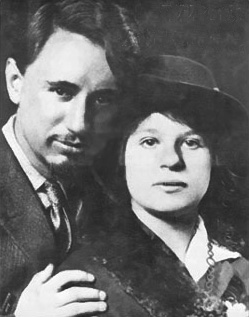 Ariel Durant started a life-long career by 15, collaborating with her husband Will Durant researching and writing best selling history. The Durants were awarded the Pulitzer Prize for General Nonfiction in 1968 for Rousseau and Revolution, the tenth volume of The Story of Civilization.
Ariel Durant started a life-long career by 15, collaborating with her husband Will Durant researching and writing best selling history. The Durants were awarded the Pulitzer Prize for General Nonfiction in 1968 for Rousseau and Revolution, the tenth volume of The Story of Civilization.
Self-employment and self-reliance were the default life path expectations for young people of the early 19th century, and were closely allied with productive, basic education of the type systematically denied to young people today.
.
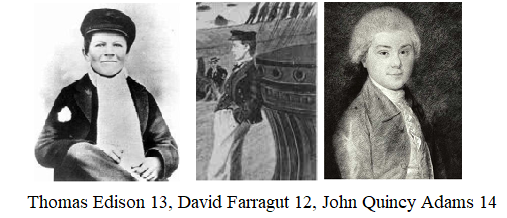
.
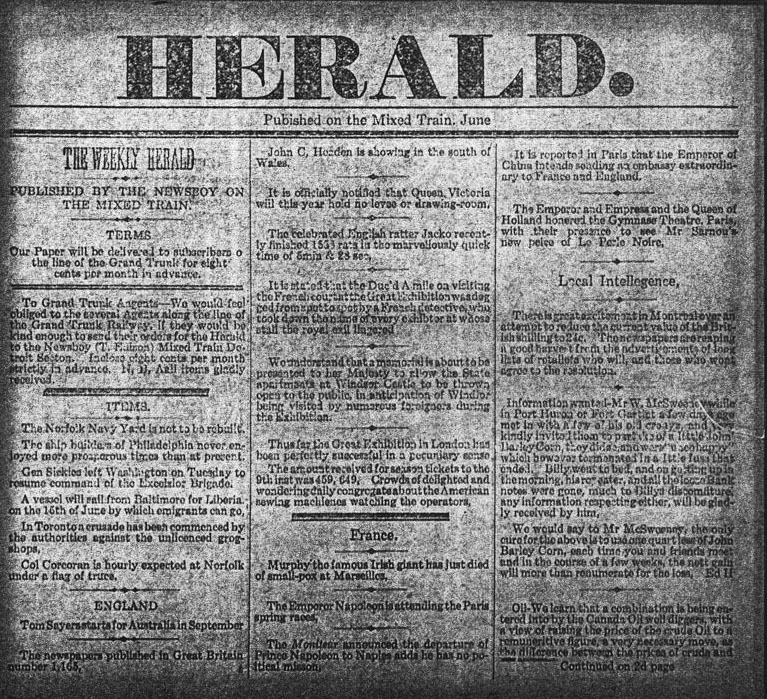 Despite elaborate anxiety about “child labor”, there are numerous anecdotes about adult-acting 13 year olds like Thos. Edison (publisher of the Grand Trunk Railroad “Herald“), David Farragut (commanded captured British prize ship with unruly prisoners at 12) and John Quincy Adams (the only member who spoke Russian in the early Revolutionary-period, U.S. diplomatic mission to the court of Saint Petersburg, active in diplomatic negotiations, at 14).
Despite elaborate anxiety about “child labor”, there are numerous anecdotes about adult-acting 13 year olds like Thos. Edison (publisher of the Grand Trunk Railroad “Herald“), David Farragut (commanded captured British prize ship with unruly prisoners at 12) and John Quincy Adams (the only member who spoke Russian in the early Revolutionary-period, U.S. diplomatic mission to the court of Saint Petersburg, active in diplomatic negotiations, at 14).
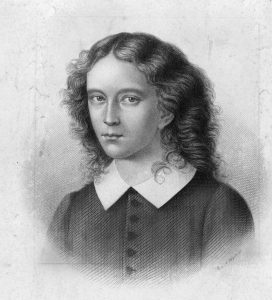 Felix Mendelssohn
Felix Mendelssohn
Allegro Molto of Felix Mendelssohn’s String Symphony No. 8 in D major, the piece written as one of a group between the ages of 12 and 14, compositions immensely more virtuosic than anything Mozart was doing at that age.
.
Names of today’s communities with a continuing, strong ethos of self-employment, necessarily involving the freedom of young adolescents to spread their wings unimpeded by controls from the financial ultra-elite, are the North American Amish and the Spanish Catalan/Basque Mondragon Commune.
.
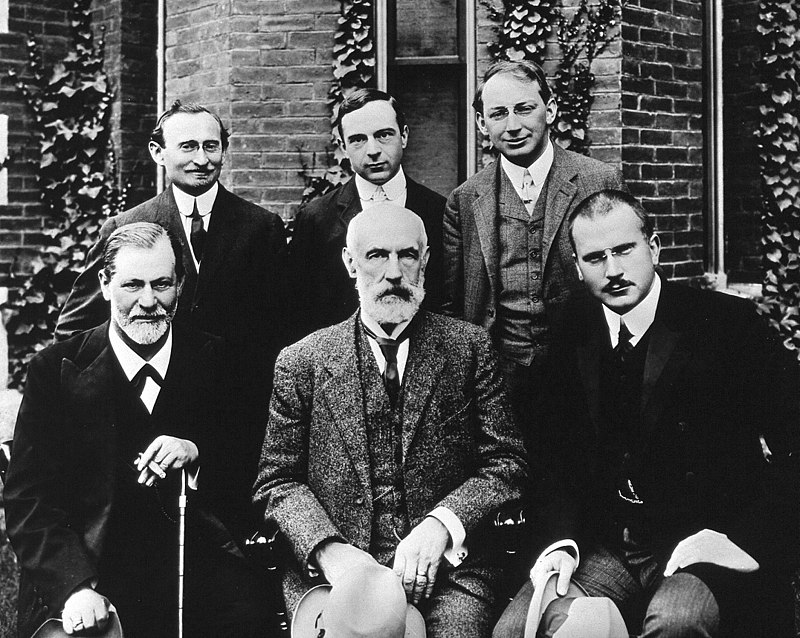 G. Stanley Hall with Freud and Jung
G. Stanley Hall with Freud and Jung
.
The rapid, forced industrialization of the American people from 1880-1920 required direct squelching of young people’s vigorous pursuit of their life path. Prussian-trained G. Stanley Hall applied the German-Romantic concept of sturm und drang, “storm and stress”, in his 1904 book Adolescence : its psychology and its relations to physiology, anthropology, sociology, sex, crime, religion and education to the labor-oversupply side of industrial capitalism’s chronic overproduction. Hall’s work introducing the novel category adolescence, resulted in the diversion of millions of young people away from the pursuit of a productive, self-directed livelihood, relegating them to the dead end of perpetual adolescence in deliberately dumbed down schools, a principle now to be extended indefinitely into old-age with Life-Long Learning as documented by John Klyczek.
.
Prior to the Civil War, when 97% of the population were engaged in the pursuit of agriculture, the ideal was self-employment on wholly-owned farms, true agrarianism—you produced everything your family consumed—without any participation in a money economy, only barter, from your own excess agricultural production, for items beyond self-production, perhaps a plow you couldn’t forge for yourself.
.
A researcher studied the simple work diary of a Yankee farmer from 1775-1795. If one his journal entries for a certain date was “made a barrel”, he had to have pre-cured the raw wooden staves in a curved shape, perfectly planed the curved pieces in the shape of waterproof staves, planed with water-tight fitting. Meanwhile, he had to forge the two bands at either end, but their shape would have to be slightly flared with a curve. Then he fit the wooden ends, and made a bung-hole and a wooden tap. In an industrial economy, he would be considered a journeyman. But on the farm where “you did everything”, this task that would have given him the name “cooper” was only one of 200 “vocations” which he was qualified to practice. His sons would have trained with him, on the expectation that they would become self-employed on farms they wholly owned; they would not be confined to a soul-prison with rootless kids of their own age who couldn’t tell each other who they were, they would be sure of their identities. But instead, their great-great-great grandsons, having been dispossessed of their inheritance at the close of the Civil War by the tax-man and Wall St., the common class forced into industrial work, would have the “life vocation” of turning a single nut on Mr. Ford’s assembly line, every 8 seconds for 14-16 hours per day, six days per week, no vacations.
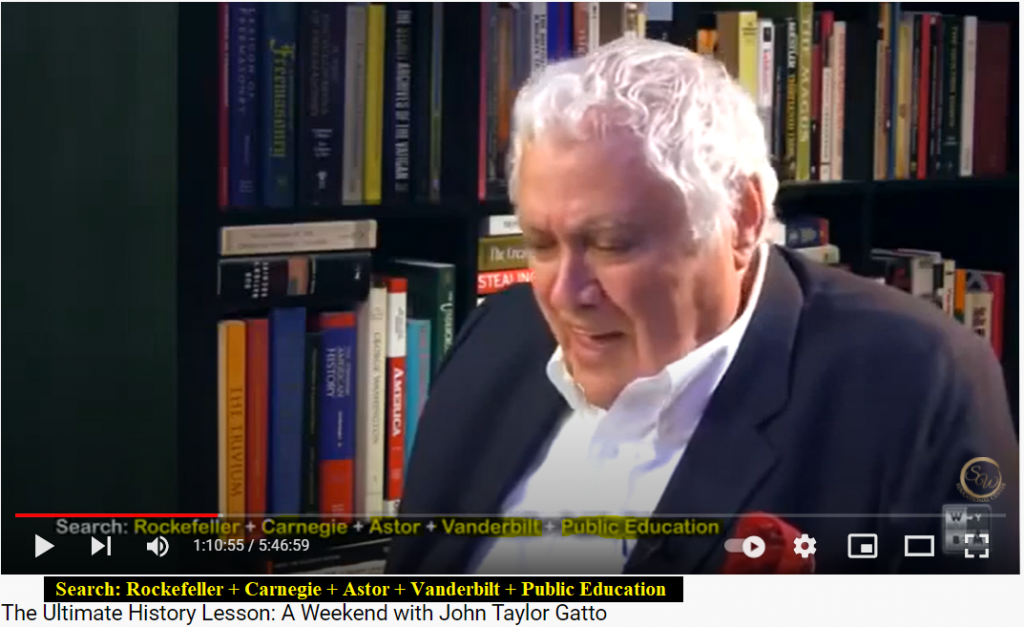
Mr. Gatto related how by 1880, after the railroad facilitated carnage of the Civil War, Americans were being forcably moved off their own farms — where they did everything — and into millionaire owned factories, where they were just cogs in a machine. (Financial exploitation of indebted soldiers returning from the Civil Was is one common explanation for the forced exodus.) The titans of Wall St., Morgan, Carnegie, Astor, Vanderbilt and Rockefeller, regarded the Yankee tradition of auto-didactic, small farmers, mechanics/engineers, inventors and entrepreneurs, as a lethal competition threat to Financial Capitalists’ Wall St. accumulation of investment monies. The elites’ most efficient solution was to undermine this threat by strangling it in the cradle; the effort to control the intellectual uprising of the common people coalesced in the very foundation of universal, compulsory/police-enforced public schooling. The compulsory, universal public school system as we understand it, was never without built-in institutional handicapping of the vast majority of students.
.
This calculated, intellectual poisoning was formally predicated on the writings of a Prussian philosopher, Johann Fichte who had written “Addresses to the German Nation” (1808-1818) to the Prussian King, demanding universal, compulsory, deliberately dumbed-down schooling, laying fault for the Prussian defeat by the French in the 1806 Battle of Jena at the feet of Napoleon’s motto “every corporal with a field marshal’s baton in his rucksack”–in other words, non-commissioned, non-professional infantry were formally directed to countermand orders from the elite, stratified professional officer class when local battlefield situations dynamically change. “The French let their commoners loose with too much independence, that’s why we lost to them” is the essence of what Fichte told King Wilhelm. Failed Indiana New Harmony commune leader Robert Owen proposed deliberate dumbing down to the Prussian king around 1830.
.

.
Mr. Gatto charmingly terms the gist, “we have to crush children’s imagination”, to stop lower class people from running amok threatening destabilizing, inventive innovation, disrupting the carefully regulated, top-planned economy, by regimenting all children into universal, compulsory, Deliberately Dumbed-Down (DDD) schooling.
.
The curriculum of the early K-12 grades in the Prussian system would be recognizable today from the current iteration of deliberate dumbing-down, Social-Emotional Learning: pastels, crayons and balloons. But at the age of 13, students were set to fighting one another, also recognizable in the adverse social conditions formally fostered in the schools (Bianca, You Animal, Shut Up!). One in 200 students would be the high leader, recognizable as the Alpha in Aldous Huxley’s Brave New World outline of Alphas-Epsilons. The top 6 students tasked with implementing the Alpha’s directions would correspond with the Beta, administrator class. The middle Gamma-Delta classes, the vast majority, would be taught to fear and envy the top classes, and despise the “dumb kids”, implicitly, the Epsilons.
.
The rise and proliferation of the Prussian-model, dumbed-down schooling system produced generations of Germans who wouldn’t cause trouble when confined to the factory floor or conscripted into the military. The revamped Prussian social-economy eventually succeeded in beating the French, in 1870. Germany’s greater success than Britain in implementing this labor model lead to World War I, when Churchill and Lord Gray decided that the economy of previously pro-British Germany, was too great a threat to Britain’s.
Germany was the incubator of behavioral psychology for control of the masses, that taught that human beings were merely stimulus-responsive animals, a system that was spread in the late 19th century by German-trained, major university, psychology department chairmen to all major world countries, even China and Japan. (Paolo Lioni, “The Leipzig Connection”, free PDF.)
Horace Mann had 3 years to try deliberate dumbing down on the children of Boston in the 1840s, with whole-word/look-say vs phonics, but a general uproar ensued when literacy rates went down and it was temporarily halted. Dumbed-down early primary literacy conditioning went to Washington D.C. and NY; from 1880-1920 it became the law under sponsorship of the Titans of Wall St., with police enforcement. In 1917 there were riots in New York City against the 1907 Gary Indiana-model school curriculum.
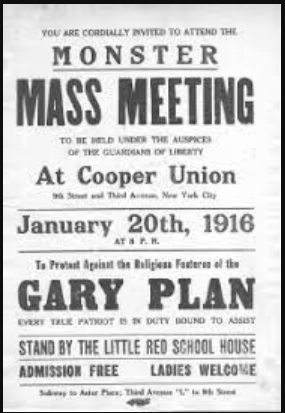
.
What follows is a prime example of backfiring of the Machiavellian manipulations on the part of a witless elite which only have the advantage of tyrannical control, but are otherwise, completely unqualified to rule, the opposite of Plato’s Philosopher Kings–it is called “blowback” in secret intelligence/Psy-Ops, in philosophy it is called “the cunning of reason”, Die List der Vernunft of Hegel.
.
 THE THIRD ROCKEFELLER GENERATION WERE INTELLECTUAL CRIPPLES: The Worm Eateth Its Own Tail (Ouroboros), The Rich Eat Their Own: Fabian Society founding member John Dewey (icon: yellow flag, black wolf dressed in white sheepskin climbing a flagpole, maroon flag with black letters “F.S.” for Fabian Society) was funded for his experimental Lincoln School by John D. Rockefeller II. The Lincoln School was attended by Rockefeller’s 4 younger sons Nelson, Laurance, David and Winthrop, some of the most powerful men in history who regulated the fates of millions of people.
THE THIRD ROCKEFELLER GENERATION WERE INTELLECTUAL CRIPPLES: The Worm Eateth Its Own Tail (Ouroboros), The Rich Eat Their Own: Fabian Society founding member John Dewey (icon: yellow flag, black wolf dressed in white sheepskin climbing a flagpole, maroon flag with black letters “F.S.” for Fabian Society) was funded for his experimental Lincoln School by John D. Rockefeller II. The Lincoln School was attended by Rockefeller’s 4 younger sons Nelson, Laurance, David and Winthrop, some of the most powerful men in history who regulated the fates of millions of people.
.
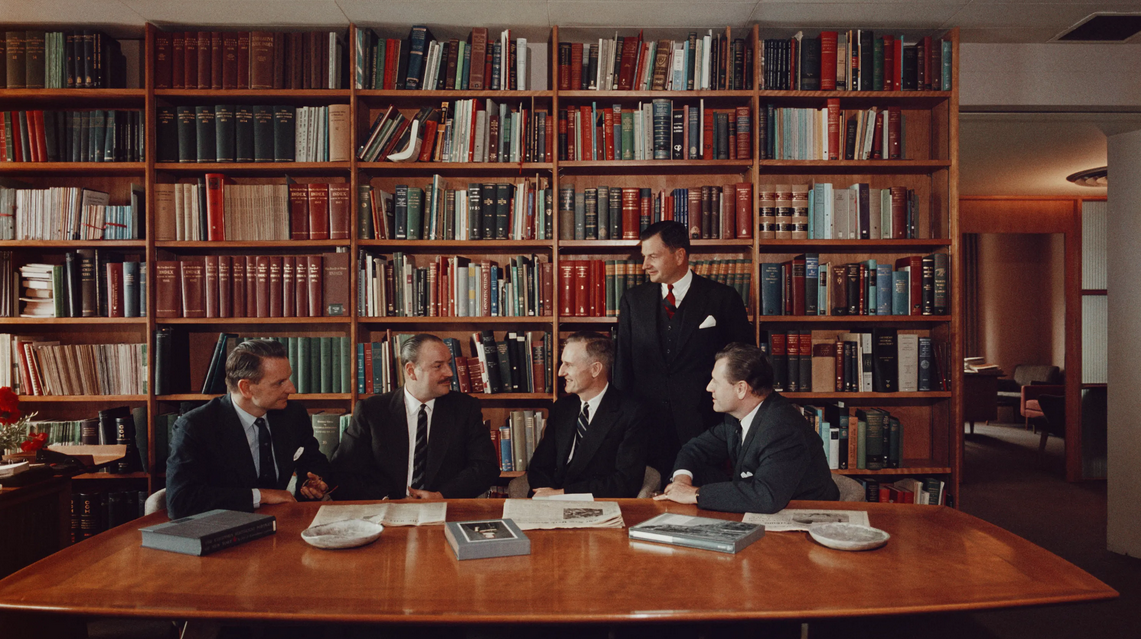
.
With only the exception of the eldest son J.D. Rockefeller III, all four of the other Rockefeller third generation sons emerged from John Dewey’s “whole-word/look-say” Lincoln School as intellectual cripples unable to read a newspaper: they all had dyslexia. Dyslexia expert Dr. Samuel Orton informed university psychology department educationists in 1931 that whole-word/look-see causes deleterious brain changes in Kindergarten-Grade 3.
.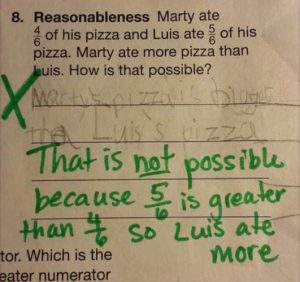 “Marty’s pizza is bigger than Luis’ pizza.” If the answer doesn’t fit what’s in the Common Core Math answer key, it’s WRONG, and your kid is relegated to permanent stupidity.
“Marty’s pizza is bigger than Luis’ pizza.” If the answer doesn’t fit what’s in the Common Core Math answer key, it’s WRONG, and your kid is relegated to permanent stupidity.
Prof. Anthony Esolen has contrasting sets of textbooks covering the crucial divide in purging curricula, the period 1920-1930. The Christian acceptance of the classics of Western Civilization had been the norm, going back into the 1 room school institution where, in contrast with the “professionalization” of the not highly regarded schoolmaster profession, amateur, elder students tutored younger ones and it was far from unknown for students below 6th grade to be pursuing, what would be known in today’s dark ages as “academically advanced studies”, all in the little 1 room schoolhouse, nutritious, basic curriculum roughage that most college students today wouldn’t be able to manage. (School boards once local to communities, have been consolidated down from 75,000 to 15,000, the easier to ensure control by federal educrats.)
.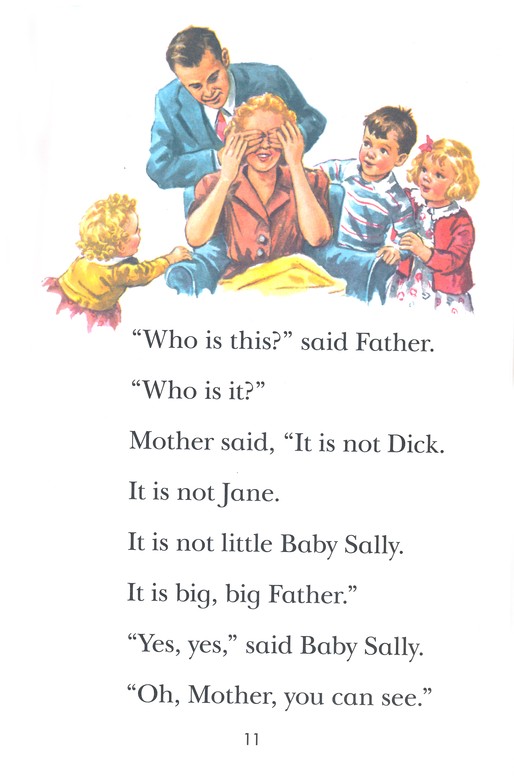 Calculated intellectual starvation at the very time children should be learning the most–contrast with John Senior’s 1,000 Good Books
Calculated intellectual starvation at the very time children should be learning the most–contrast with John Senior’s 1,000 Good Books
.
By 1930, the classic-oriented curriculum with a phonics foundation, had been purged in exchange for Fun With Dick and Jane, whole-word/look-see, early primary literacy, handicapping indoctrination. By the time of Rudolph Flesch’s “Why Johnny Can’t Read” 1955, no teachers had themselves been trained in classic literature, a prime goal of the atheist/agnostic/messianic secular-humanist founders of universal compulsory schooling from 1880-1920, the easier to ensure elite, top-down control of unruly lower masses in the interests of their tax-exempt non-profit foundation masters, the wealthy pathetic except for their inheritances who endowed the Carnegie, Ford and Rockefeller foundations.
.
The Science of Illiteracy (Click-Expand or Bypass)
Click ^ again to contract
September 23, 2022 – K–12: The Science of Illiteracy – By Bruce Deitrick Price
American Thinker
Emily Hanford became famous over the last several years for talking constantly about the Science of Reading. That’s where children learn to read in the simplest, most efficient way and go on to enjoy many hundreds of books. Long story short, what she means by the Science of Reading is phonics — nothing less, nothing else.
The problem is that the left in our country forced phonics into oblivion starting in 1931. So what was going on for those 90 years from 1931 to now? A titanic and quite stupid con, that’s what.
Basically, the professors of education at Harvard and such places identified and codified the things that work — and then (this is my summary) they made sure that none of those things are allowed in the schools. Only methods known not to work are praised in our classrooms. The simplest, most appropriate name for this approach is the Science of Illiteracy.
Sometimes the impression is given that these professors drifted around from one method to another. That’s actually not true. They have only one method — but it has many names (such as sight-words and Whole Word) — and they are content to hide inside the confusion they create.
Reading consists of learning two things: letters and sounds. If you’re not focusing on letters and sounds, you don’t have phonetic instruction of a phonetic language.
Note how precise the pseudo-reading program is. You get rid of letters and sounds. You don’t mention an alphabet, and you don’t teach children what the alphabet represents. The Science of Illiteracy is really easy. You just leave out the valuable parts and let kids struggle.
One of the oddest spectacles you’ll ever see is the top brains in American education all agreeing that the alphabet serves no useful purpose. How do you find fanatics like this?
These professors were monolithic; each one parroted the wisdom of the others. Each one finds a slightly different way of making the same dubious claims. Notice the smug, Olympian tone.
“Current practice in the teaching of reading does not require a knowledge of the letters,” says Dr. Donald D. Darrell.
“The skillful teacher will be reluctant to use any phonetic method with all children,” says Dr. Paul Witty.
Dr. Roma Gans tells it simply and starkly: “In recent years phonetic analysis of words at any level of the reading program fell into disrepute.”
“Little is gained by teaching the child sounds and letters as a first step to reading. More rapid results are generally obtained by the direct method of simply showing the word to the child and telling him what it is.” Thus spake Anderson and Dearborn.
“The words should be recognized as whole words. It is detrimental indeed to have the children spell or sound out the words at this stage.” That’s Bond and Wagner.
We have to thank Rudolf Flesch for creating a time capsule circa 1940 in the first chapter of his famous book Why Johnny Can’t Read. He quotes all the schemers shaping our culture. A dozen of these people took children down the wrong path so they would become victims of the Science of Illiteracy.
The success of Flesch’s book in 1955 was the first sign of resistance by ordinary citizens. The Education Establishment didn’t wait six months before it set up the counter-group known as the International Reading Association. This was a massive organization intended to keep teachers and parents in line. It succeeded to a tragic degree.
How do the professors refer to their voodoo reading? In the most respectful terms, as if Einstein had written it out for them. On the other hand, Rudolf Flesch complained that teaching children to read English with sight-words means eliminating 4,000 years of progress, as we moved from difficult symbol languages (such as Egyptian hieroglyphics) to more efficient ways to let great masses of people read their language.
Nineteen thirty-one was the beginning of the end of our school system. Yes, 1931. That’s when the education professors pushed phonics out of the public schools and imposed a sham method that virtually guaranteed that most students would become functional illiterates, evidently the goal of the Science of Illiteracy.
This power-grab in 1931 was historically remarkable. The Depression had just started. The country was nervous and unstable. The professors thought they had enough leverage to pull off a coup, almost as ambitious as the attack on Pearl Harbor but with even greater ramifications for the future.
I wouldn’t be surprised if all these professors quoted by Flesch were members of the Communist Party (AKA the Communist International). They were clearly in control of K–12 education in America. All they had to do was befuddle and outwit the public.
Money was a big factor. All the top professors made millions by creating a series of little books often referred to as Dick and Jane basal readers.
Please remember that Dr. Samuel Orton did a famous study in 1928 that determined that sight-words would mess up a child’s brain. Education professors had to pretend for decades that they believed in a method that they knew was fake. Their deception ushered in the Science of Illiteracy.
Throughout this saga, the Education Establishment bullied recklessly as they announced their visions, denounced all research that didn’t support their chicanery, and forced the children and parents to accept their Science of Illiteracy.
We see this reckless swagger now in the way the Democrats try to control government the same way they control education. Americans can learn so much about weaknesses in our democracy by studying K–12. Our ideals break down quickly when ruthless people break all the rules.
We can easily save the public schools, but only if we adhere to the Science of Reading. Here’s a four-minute version of that.
.
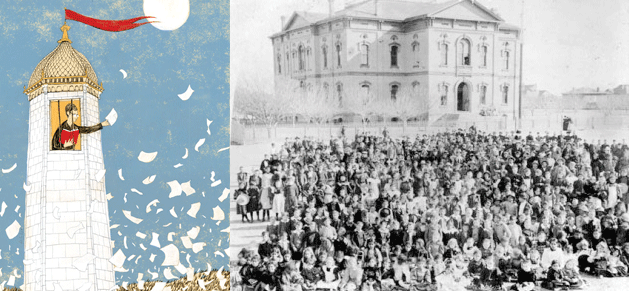 Ideology From the Ivory Tower Down to the Normal Schools
Ideology From the Ivory Tower Down to the Normal Schools. Intellectuals spin ethereal theories about how the little people must live, but don’t pick up the tab. Educational Psychologists destroyed primary 1-6 education between 1920 and 1940, from Columbia Teacher’s College for “trainers of trainers”, to mis-educate generations of teachers at Normal Schools across America
.
A Secondary School Teacher turned Historian Remarks upon the Dumbing Down Principle Moving Upwards into a Professional Context – The Realm of Academic Historians. (Post-Graduates seeking a place on the academic career path had better stick to establishment approved narratives; any movement outside orthodox viewpoints will doom a troublemaker’s career.) This principle is of the same tenor, to the same effect, of school children undergoing adverse cognitive and behavioral conditioning to prevent their achieving autonomy and finding truth, against the interests of elites in the hierarchical contemporary world which demands adherence to mass processing and disallows individual initiative outside those mass process parameters.
.
Psychology Prof. Edward Lee Thorndyke, at Columbia Teachers’ College, discouraged basic education which serves as a foundation for self-determination, as useless, to be preferred to mass socialization to train young people to be good employees and not to cause any trouble.
“Studies of the capacities and interests of young children indicate the advisability of placing little emphasis before the age of six upon either the acquisition of those intellectual resources known as the formal tools—reading, spelling, arithmetic, writing, etc.—or upon abstract intellectual analysis. Despite rapid progress in the right direction, the program of the average elementary school is too narrow and academic in character. Traditionally the elementary school has been primarily devoted to teaching the fundamental subjects, the three R’s, and closely related disciplines.”
Children are not taught their coherent knowledge-base–identifiable in the Trivium as “Grammar”–beyond the limited needs of the severely-constricted, lifetime employment target irrevocably established in their testing-record early in K-3. (Your child has a secret identity number available to all employers, so forget about evading the system.) The constant down-grade in education attainment, which kids could evade if they weren’t institutionalized, is not accidental or incidental, it is the dedicated purpose of schooling.
.
The Carnegie Foundation for World Peace and the Rockefeller Foundation funded pensions for “professional”, Normal School trained teachers at the turn of the 19th century…but at a price–if teachers wanted to avoid DDD and instead use initiative and good curricula to help students self-actualize, they would be got rid of.
.
That damned Cat in the Hat took nine months until I was satisfied. I did it for a textbook house and they sent me a word list. That was due to the Dewey revolt in the Twenties in which they threw out phonic reading and went to word recognition, as if you’re reading Chinese pictographs instead of blending sounds of different letters. I think killing phonics was one of the greatest causes of illiteracy in the country. Anyway, they had it all worked out that a healthy child at the age of four can learn so many words in a week and that’s all. So there were two hundred and twenty-three words to use in this book. – Theodor Geisel (Dr. Seuss), Arizona Magazine, June 1981Dr. Seuss was recruited from advertising with a list of 223 words for children to visually memorize without phonic deciphering ability, explicitly on the model of Chinese ideograms which must be “read” as pictures; late in life Theodor Geisel, now a race criminal, expressed regret at the damage he had caused facilitating dyslexia through whole-word/look-see, early primary, anti-literacy conditioning. Students’ usual comment when they are confronted with a new word is “I can’t read that, I’ve never seen it before”.
.
They have no chance of discovering marvelous decoding power of unfamiliar words, of the phonetic base literacy, from the ancient Chaldean/Phoenician phonemic-symbolic, sound-symbol alphabet which underlies Hebrew, Greek, Latin, German, Cyrillic/Russian and most western alphabet systems, one of the greatest innovations in human intellectual history.
.
Mr. Gatto noted that the military tested recruits in WW2 at mid-90 percentile literacy rates, low-80 in Korea, high-60 percentile in Viet Nam, now the military has difficulty getting volunteers who can read a basic newspaper article.
.
WE breed water dogs not to bite game birds, we hood falcons to control them, when race horses run too fast we “handicap” them with lead weights, and when students are in danger of independent learning so that they threaten to evade being conditioned into mindless consumers and docile employees of giant corporations, we subject them to “schooling”.
.
Mr. Gatto notes how the structure of schooling is designed to handicap children: timed bells, location controls, switching from 1 disconnected subject to another while not allowing project completion or drawing higher associations between subject areas, continual invasion of privacy and lack of personal time (extended by t.v. prior to the internet on cell-phones with the result that kids are cynical, cruel and disconnected from communities), teacher domineering of the students’ attention agenda, explicit deprivation of self-directed studies and adulthood-oriented learning activities, arbitrary judgment and punishment-reward system for making students dependent on teachers for WHAT to think, not HOW TO LEARN to think for one’s self on the Trivium model.
.
Students are taught to fear and envy the upper elites and despise the lower “dumb kids”. Students are age-segregated into ghettos of kids of similar age from whom they can’t receive any assistance discovering their own identities, which they used to get from adopting their parents’ livelihoods and culture as little adults. Disposable networks of limited purpose and duration fostered by schooling malfeasance have pushed out our formerly deep-rooted community involvement; school disrupts the free relationships in which people of all ages used to be able to freely associate with each other in in-depth personal involvement, people of different age categories offering involvement based on their life experience, young people giving the elderly their vigor, elderly people their wisdom and attention. Television pushed this out, now cell-phone based internet, in the future, field-generated connectivity to captivate all the senses so contact with ordinary reality can be continually monitored, regulated and modified by central controllers.
.
Childhood which Mr. Gatto declared from the pre-technolocratic past normally to be over by 7, or 11 at the latest, is being indefinitely extended beyond the 20s with “life long learning” conditioning. (I worked with a man who had been in college from just after high school until his mid-50s, who had taken 5 college degrees without attaining any noticeable life accomplishment, college was simply an unreal world in which there was no accountability or self-checking about the results of one’s activity, if there had been some harm to others caused by intellectual experiments upon real-life people, there was no accountability.)
.
From the beginning of the Prussian system as devised by behaviorsts like Pavlov’s teacher Wilhelm Wundt, students were socially conditioned to themselves insist on conformity in outlook and ideation, to be their own enforcers of ideological homogeneity, to socially punish rebellious individuality. This conformity drive continues with subtle but quite real, hierarchical student social groupings, Mean Girls (Queen Bees and Wannabes) under the personality corrosion of social media experience designed by experts in fostering addiction.
.
As noted by Paolo Lioni (Leipzig Connection), the Prussian behaviorist system which sees humanity as only an aggregate of conditioned animal reactions, was spread by late 19th century psychology dept. chairmen. Pre-adolescent schooling in the Prussian model largely comprised, in effect, extended kindergarten, until age 13, when the students were formally set to fighting one another. In the Prussian model, one in 200 students, the high-elite Alphas in Aldous Huxley’s Brave New World, were taught to regulate the lower orders through a control hierarchy reposing on a second layer, a sub-elite of 6 in 200 students destined to become Beta administrators. Students by 2nd grade have a confidential federal identifier number indelibly setting their lifelong employment fate, universally accessible through data sharing by corporations, but unknown to parents.
.
John Klyczek (School World Order: The Technocratic Globalization of Corporatized Education), a community college adjunct professor, takes this system, now using portable Chromebooks to convey operant conditioning long established in student computer software, into the period 1960-2021, with much background from Charlotte Thomson Iserbyt (The Deliberate Dumbing Down of America).
.
Chromebooks are used as the vehicle for the conditioning methodology of B.F. Skinner, only to give students the bare minimum of training destining them for narrow job categories with severely limited upward mobility potential which they are assigned from early K-12. The cookie-cutter system is designed to produce legions of mindless consumers and compliant employees in gigantic corporations.
Francie and Neely’s German Grandmother remarks on the potential of self-education to free young people from the rigidity of old-world class systems, in A Tree Grows in Brooklyn.
.
Mr. Gatto challenged B.F. Skinner’s method of “operant conditioning” treating human beings as lab rats. “I began to devise guerrilla exercises to allow as many of the kids I taught as possible the raw material people have always used to educate themselves: privacy, choice, freedom from surveillance, and as broad a range of situations and human associations as my limited power and resources could manage … to maneuver them into positions where they would have a chance to be their own teachers and to make themselves the major text of their own education.”
.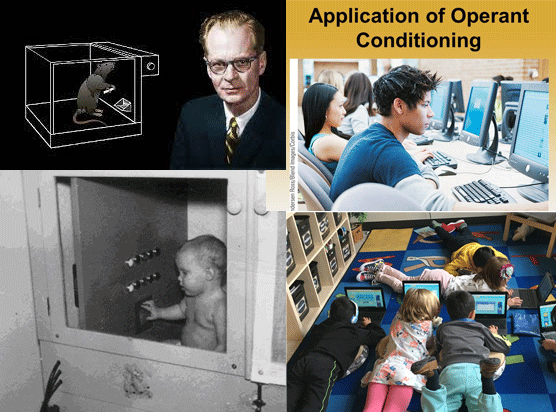 Skinner’s infant daughter Deborah, who wasn’t allowed to be touched, was the first experimental subject decades before computers confined your child’s mind in a portable Skinner box.
Skinner’s infant daughter Deborah, who wasn’t allowed to be touched, was the first experimental subject decades before computers confined your child’s mind in a portable Skinner box.
.
.
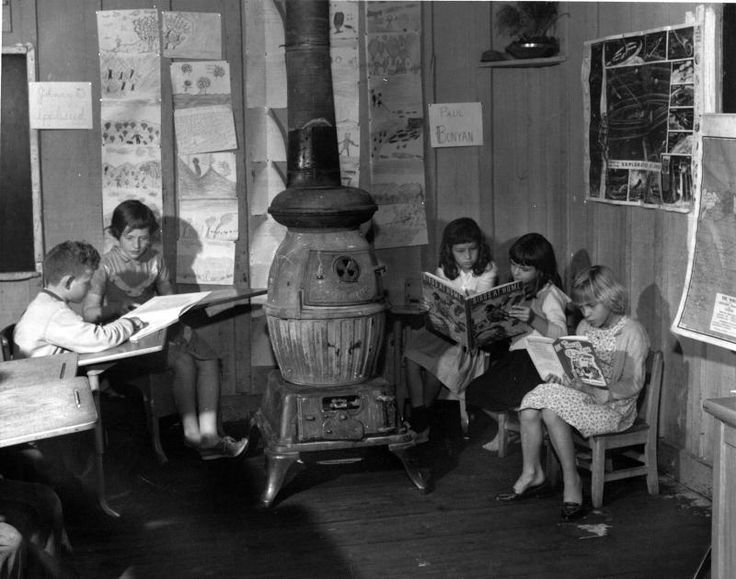 Fascinating self-education in the library corner of the One-Room Schoolhouse: “…the older students sometimes helping the younger with their lessons; the younger overhearing the lessons of their elders and learning them almost before they [the senior students] learned them…Two of the lessons stand out in my mind. Each took up a single sheet of paper. One of them was headed by a couple of verses of devotional poetry. Beneath the verses, the student had parsed every word in the verses, describing what part of speech it was, what grammatical form it bore (case, number, and gender for nouns and adjectives; person, number, tense, mood, and voice for verbs), what function it served in its clause, and what relation it bore to other words. The student’s performance was entirely correct. The other lesson was obviously an introductory one: the student wrote a noun in its singular and plural forms, in the nominative, genitive, dative, and accusative cases. This second student was clearly one of the younger children, as you could tell from an occasional roughness in his printing. The word in question was doulos (δοῦλος): Greek for “servant.” The children were evidently studying koine Greek, so as to be able to read the New Testament in the original tongue.” – Anthony Esolen, Out of the Ashes: The Rebuilding of American Culture. Recollections of the “Anne of Green Gables” One-Room Schoolhouse in Orwell Corner, Prince Edward Island by Nova Scotia, where there was no upper-limit on what children could learn.
Fascinating self-education in the library corner of the One-Room Schoolhouse: “…the older students sometimes helping the younger with their lessons; the younger overhearing the lessons of their elders and learning them almost before they [the senior students] learned them…Two of the lessons stand out in my mind. Each took up a single sheet of paper. One of them was headed by a couple of verses of devotional poetry. Beneath the verses, the student had parsed every word in the verses, describing what part of speech it was, what grammatical form it bore (case, number, and gender for nouns and adjectives; person, number, tense, mood, and voice for verbs), what function it served in its clause, and what relation it bore to other words. The student’s performance was entirely correct. The other lesson was obviously an introductory one: the student wrote a noun in its singular and plural forms, in the nominative, genitive, dative, and accusative cases. This second student was clearly one of the younger children, as you could tell from an occasional roughness in his printing. The word in question was doulos (δοῦλος): Greek for “servant.” The children were evidently studying koine Greek, so as to be able to read the New Testament in the original tongue.” – Anthony Esolen, Out of the Ashes: The Rebuilding of American Culture. Recollections of the “Anne of Green Gables” One-Room Schoolhouse in Orwell Corner, Prince Edward Island by Nova Scotia, where there was no upper-limit on what children could learn..
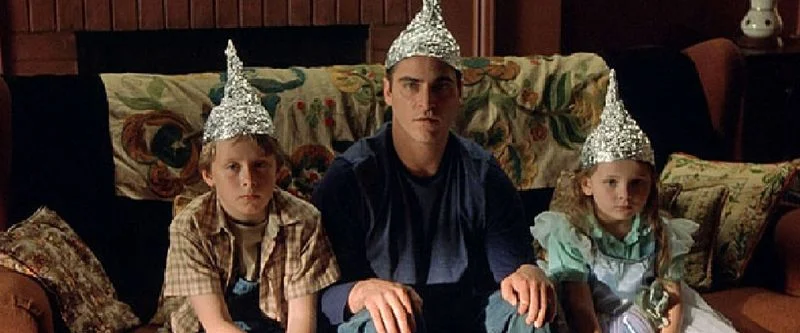
Get Ready to Don Your Tinfoil Dunce’s Cap If You Buy Any of This
Mr. Gatto notes how a vast economic system irrevocably committed to the current schooling tyranny has an unreleasable deathlock on our children’s future. The arbitrary, capricious schooling policies come down from a vertical pipeline with such ingrained anonymity that school administrators have not the slightest idea from where they originate. A gamut of school unions dedicated to every occupational classification down to aides, crowd out the ostensible, original function of “education”; unions were originally part of the centralized master planning from the turn of the 19th century–compulsory dumbed-down schooling was founded on unions. They constantly diminish the interests of teachers as ever increasing numbers of non-instructional classified personnel, who exercise no direct educational function for students’ benefit, are continually hired, padding school-district employment rolls so that the expense per student continually rises with continually diminishing educational effectiveness, each new hire contributing union dues with no bargaining or interest advantage to the teachers who actually manage children, resulting in continually diminishing compensation. Union bosses comprise the top layer of an elite unable to be overthrown that relegates virtually all children to soul-prison from K-12 and beyond.
.
Mr. Gatto calls schooling the largest public works project in history, the largest business in America and probably in the world. Textbook companies, testing companies, schooling paraphernalia and school-lunch suppliers–to diminish the autonomy of families and make the isolated individual dependent on government–university educational-psychology departments and the federal government, a gobsmacking breadth of interlocking economic and political interest-sectors, together constitute an immovable, self-interested institutional block to improving the prospects for children.
.
The corporate consumerist and human resources management stakes in schooling have the effect that if children were ever to be taught self-reliance, autonomy and free thinking–public schools and colleges are far more rigidly doctrinaire than parochial-religious schools–if young people were ever to attain independence from the constant requirement of being taught what to think and minute oversight of what they do at all times, in schooling and employment, there would be a terrible crash in the existing, dependency-based economy.
.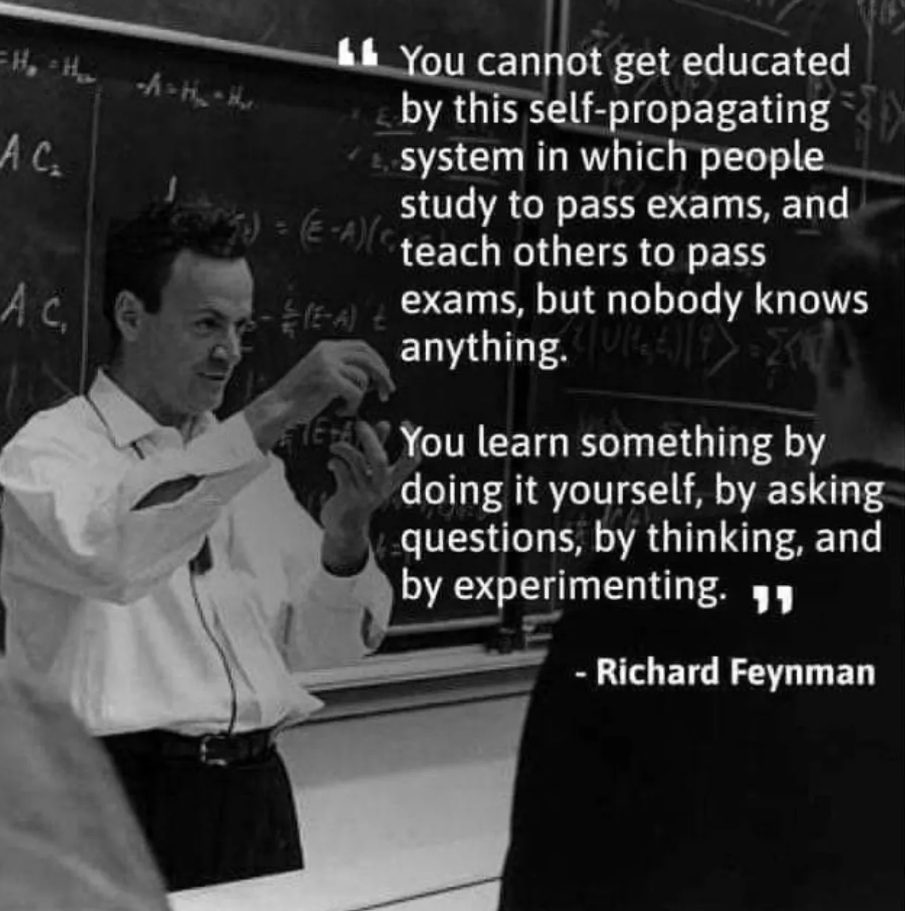 Dr. Feynman is known for having resisted the fierce NASA coverup of the Challenger Shuttle tragedy, demonstrating that fuel leakage from improperly seated O-rings caused the rocket explosion.
Dr. Feynman is known for having resisted the fierce NASA coverup of the Challenger Shuttle tragedy, demonstrating that fuel leakage from improperly seated O-rings caused the rocket explosion.
.
Charlotte Thomson Iserbyt asserts that if your children are undergoing standardized testing (“only good for projecting how students will perform on subsequent standard tests, not how they will adapt to real-life challenges” – Mr. Gatto), whether in public, private, charter schools or even home-schools, they are under the system’s control. The only escape would be to go off the grid, something that is largely impossible under a worldwide control hierarchy that has turned away from enforcing its mandates through conflict to finessing its dictates in the most subtle social control system in human history, by fostering addictive divertissments to keep perpetual children of all ages constantly distracted, the calculated addiction-fostering of the social-media interface now seamlessly integrated with Skinnerian operant conditioning for lifelong cognitive tyranny, delivered with “wrap-around”/”pipeline services” in The Community School.
Charlotte Thomson Iserbyt’s Belgian husband, Jan, remarked to her, that in Europe, beyond the reach of Madison Ave. opinion engineering, these types of observations aren’t relegated to wearers of tinfoil hats, they are open, common knowledge. “Oh, of course! We were taught all about this in school.” You are in trouble with the authorities merely for reading this article.
.
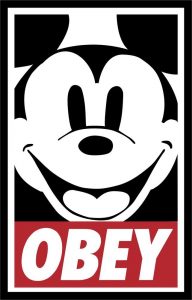
Author List
- Rudolph Flesch (Why Johnny Can’t Read), noting how whole-word/look-say reading pedagogy undermines the educational wellbeing of K-3 grade students.
- Samuel Blumenfeld (Crimes of the Educators, free PDF), noting how whole-word/look-say is associated with the vast expansion of dyslexia.
- John Taylor Gatto (Underground History of American Education, free PDF), a 30-year teaching veteran highly accomplished at evading, in his students’ interest, university teaching department-dictated, systematic anti-intellectual conditioning; he got to the root of a plan of immensely extensive time duration, to undermine the wellbeing of workers’ children in the interests of the late 19th century Titans of Wall St.
- Paolo Lioni (The Leipzig Connection, free PDF), details the connection between 19th century German behavioral psychology and the institutional establishment of American schooling 1880-1920.
- Charlotte Thomson Iserbyt (The Deliberate Dumbing Down of America, free PDF), a descendant of Yale Skull & Bones men, delved into the federal consolidation of rigid curriculum controls 1950-2020.
- Rita Kramer, Ed School Follies: The Miseducation of America’s Teachers. Rita couldn’t really crack the secretive world of educational psychology, but she had good, commonsense insights into what was wrong with the system, as seen from the perspective of teachers.
- continued now, in ongoing research, by John Klyczek (School World Order: The Technocratic Globalization of Corporatized Education).
Along with lightweight DDD (deliberate dumbing down) raves by Bruce Deitrick Price, there is additional corroboration from Georgetown professor Carroll Quigley, the author of the extremely candid Tragedy and Hope–he didn’t necessarily disagree with the covert methods of the master controllers, he just wanted to publicize them–, Antony Sutton (whistleblower on Wall St. support for the Bolshevik Revolution and the Chinese Communist Long March, ejected from Stanford’s Hoover Institution, died alone, penniless, his notes thrown out), and continued by serious studies of the current world order by Patrick Wood (Technocracy Rising: The Trojan Horse Of Global Transformation).
To: daniel1212
Thank you for posting...offloading to email for printing
3
posted on
06/17/2024 7:19:19 AM PDT
by
goodnesswins
(Climate cultists think we should go back to the goo"d times when people starved)
To: CharlesOConnell
Thank you, also for posting...also offloading to email for printing
4
posted on
06/17/2024 7:20:36 AM PDT
by
goodnesswins
(Climate cultists think we should go back to the goo"d times when people starved)
To: CharlesOConnell
5
posted on
06/17/2024 7:56:39 AM PDT
by
spankalib
To: daniel1212
Lots of interesting information there. I did see one minor mistake—Theodore Roosevelt was President from 1901 to 1909, not until 1905.
To: daniel1212
Reverence and use of the Bible was also prominent in higher education, with the second requirement of Harvard Universities Lawes of 1642 (after requiring literacy in Latin, which language the Scriptures were then mostly translated into) And in which language one learns to not end such clauses with prepositions.
I am naturally suspicious of any such article which fails to mention that the final and irrecoverable turn for American education occurred when, under the influence of the Prussian Model of education, we adopted the system-wide "Normal School" model for sake of Bellamy's National Socialist agenda.
To: CharlesOConnell
This accorded with the Protestant ethic that people must be able to read their Bibles. Americans typically attained solid, basic literacy in a mere 40 hours of phonics, and practical numeracy in only 42 hours of arithmetic study (my grandfather, William Penny Keevers, a grocer, could add a running 3 column total in his head without a mechanical calculator), after which 13 year olds were expected to be pursuing self-employment and could enlarge their own education with such limited resources as were available to them, largely the Bible, Shakespeare and Plutarch’s Lives–not a bad foundation. Thanks for the tome, which I will later have to digest!
8
posted on
06/17/2024 1:07:11 PM PDT
by
daniel1212
(Turn 2 the Lord Jesus who saves damned+destitute sinners on His acct, believe, b baptized+follow HIM)
To: goodnesswins
Thank you for posting...offloading to email for printing Thank God for what is good!
9
posted on
06/17/2024 1:10:01 PM PDT
by
daniel1212
(Turn 2 the Lord Jesus who saves damned+destitute sinners on His acct, believe, b baptized+follow HIM)
To: Verginius Rufus
Lots of interesting information there. I did see one minor mistake—Theodore Roosevelt was President from 1901 to 1909, not until 1905. Good catch, though I cannot edit the source now. I think Teddy was one of the best Presidents we ever had, and it is a judgment that do not have one such today, while it is a act of mercy that Trump was elected.
10
posted on
06/17/2024 1:17:50 PM PDT
by
daniel1212
(Turn 2 the Lord Jesus who saves damned+destitute sinners on His acct, believe, b baptized+follow HIM)
To: daniel1212
Of course Teddy was an accidental President—if some nitwit had not shot McKinley, and if competent doctors had treated McKinley after he was shot, Teddy would not have become President (unless elected in his own right later). Of course he is one of the four Presidents honored with portraits on Mount Rushmore (at least for now). The selection was made before Franklin D. Roosevelt became President. But professional historians now rank Theodore Roosevelt at #4 of all the Presidents. His standing has risen since I was an undergraduate. His more enlightened views on race (inviting Booker T. Washington to a meal at the White House) may be part of the reason for that.
To: daniel1212
Harry Truman never went to college, but he was fond of Plutarch, which may have benefited him when he became President. He also read Thucydides.
At Lincoln's birthplace they have the Bible on display he read from as a youth. It may have been the only book his family owned. It probably helped him develop his excellent command of the language.
Disclaimer:
Opinions posted on Free Republic are those of the individual
posters and do not necessarily represent the opinion of Free Republic or its
management. All materials posted herein are protected by copyright law and the
exemption for fair use of copyrighted works.
FreeRepublic.com is powered by software copyright 2000-2008 John Robinson

 Ariel Durant started a life-long career by 15, collaborating with her husband Will Durant researching and writing best selling history. The Durants were awarded the Pulitzer Prize for General Nonfiction in 1968 for Rousseau and Revolution, the tenth volume of The Story of Civilization.
Ariel Durant started a life-long career by 15, collaborating with her husband Will Durant researching and writing best selling history. The Durants were awarded the Pulitzer Prize for General Nonfiction in 1968 for Rousseau and Revolution, the tenth volume of The Story of Civilization. 
 Despite elaborate anxiety about “child labor”, there are numerous anecdotes about adult-acting 13 year olds like Thos. Edison (publisher of the Grand Trunk Railroad “Herald“), David Farragut (commanded captured British prize ship with unruly prisoners at 12) and John Quincy Adams (the only member who spoke Russian in the early Revolutionary-period, U.S. diplomatic mission to the court of Saint Petersburg, active in diplomatic negotiations, at 14).
Despite elaborate anxiety about “child labor”, there are numerous anecdotes about adult-acting 13 year olds like Thos. Edison (publisher of the Grand Trunk Railroad “Herald“), David Farragut (commanded captured British prize ship with unruly prisoners at 12) and John Quincy Adams (the only member who spoke Russian in the early Revolutionary-period, U.S. diplomatic mission to the court of Saint Petersburg, active in diplomatic negotiations, at 14). Felix Mendelssohn
Felix Mendelssohn  G. Stanley Hall with Freud and Jung
G. Stanley Hall with Freud and Jung


 THE THIRD ROCKEFELLER GENERATION WERE INTELLECTUAL CRIPPLES: The Worm Eateth Its Own Tail (Ouroboros), The Rich Eat Their Own: Fabian Society founding member John Dewey (icon: yellow flag, black wolf dressed in white sheepskin climbing a flagpole, maroon flag with black letters “F.S.” for Fabian Society) was funded for his experimental Lincoln School by John D. Rockefeller II. The Lincoln School was attended by Rockefeller’s 4 younger sons Nelson, Laurance, David and Winthrop, some of the most powerful men in history who regulated the fates of millions of people.
THE THIRD ROCKEFELLER GENERATION WERE INTELLECTUAL CRIPPLES: The Worm Eateth Its Own Tail (Ouroboros), The Rich Eat Their Own: Fabian Society founding member John Dewey (icon: yellow flag, black wolf dressed in white sheepskin climbing a flagpole, maroon flag with black letters “F.S.” for Fabian Society) was funded for his experimental Lincoln School by John D. Rockefeller II. The Lincoln School was attended by Rockefeller’s 4 younger sons Nelson, Laurance, David and Winthrop, some of the most powerful men in history who regulated the fates of millions of people.
 “Marty’s pizza is bigger than Luis’ pizza.” If the answer doesn’t fit what’s in the Common Core Math answer key, it’s WRONG, and your kid is relegated to permanent stupidity.
“Marty’s pizza is bigger than Luis’ pizza.” If the answer doesn’t fit what’s in the Common Core Math answer key, it’s WRONG, and your kid is relegated to permanent stupidity.  Calculated intellectual starvation at the very time children should be learning the most–contrast with John Senior’s 1,000 Good Books
Calculated intellectual starvation at the very time children should be learning the most–contrast with John Senior’s 1,000 Good Books Ideology From the Ivory Tower Down to the Normal Schools. Intellectuals spin ethereal theories about how the little people must live, but don’t pick up the tab. Educational Psychologists destroyed primary 1-6 education between 1920 and 1940, from Columbia Teacher’s College for “trainers of trainers”, to mis-educate generations of teachers at Normal Schools across America
Ideology From the Ivory Tower Down to the Normal Schools. Intellectuals spin ethereal theories about how the little people must live, but don’t pick up the tab. Educational Psychologists destroyed primary 1-6 education between 1920 and 1940, from Columbia Teacher’s College for “trainers of trainers”, to mis-educate generations of teachers at Normal Schools across America  Skinner’s infant daughter Deborah, who wasn’t allowed to be touched, was the first experimental subject decades before computers confined your child’s mind in a portable Skinner box.
Skinner’s infant daughter Deborah, who wasn’t allowed to be touched, was the first experimental subject decades before computers confined your child’s mind in a portable Skinner box.  Fascinating self-education in the library corner of the One-Room Schoolhouse: “…the older students sometimes helping the younger with their lessons; the younger overhearing the lessons of their elders and learning them almost before they [the senior students] learned them…Two of the lessons stand out in my mind. Each took up a single sheet of paper. One of them was headed by a couple of verses of devotional poetry. Beneath the verses, the student had parsed every word in the verses, describing what part of speech it was, what grammatical form it bore (case, number, and gender for nouns and adjectives; person, number, tense, mood, and voice for verbs), what function it served in its clause, and what relation it bore to other words. The student’s performance was entirely correct. The other lesson was obviously an introductory one: the student wrote a noun in its singular and plural forms, in the nominative, genitive, dative, and accusative cases. This second student was clearly one of the younger children, as you could tell from an occasional roughness in his printing. The word in question was doulos (δοῦλος): Greek for “servant.” The children were evidently studying koine Greek, so as to be able to read the New Testament in the original tongue.” – Anthony Esolen, Out of the Ashes: The Rebuilding of American Culture. Recollections of the “Anne of Green Gables” One-Room Schoolhouse in Orwell Corner, Prince Edward Island by Nova Scotia, where there was no upper-limit on what children could learn.
Fascinating self-education in the library corner of the One-Room Schoolhouse: “…the older students sometimes helping the younger with their lessons; the younger overhearing the lessons of their elders and learning them almost before they [the senior students] learned them…Two of the lessons stand out in my mind. Each took up a single sheet of paper. One of them was headed by a couple of verses of devotional poetry. Beneath the verses, the student had parsed every word in the verses, describing what part of speech it was, what grammatical form it bore (case, number, and gender for nouns and adjectives; person, number, tense, mood, and voice for verbs), what function it served in its clause, and what relation it bore to other words. The student’s performance was entirely correct. The other lesson was obviously an introductory one: the student wrote a noun in its singular and plural forms, in the nominative, genitive, dative, and accusative cases. This second student was clearly one of the younger children, as you could tell from an occasional roughness in his printing. The word in question was doulos (δοῦλος): Greek for “servant.” The children were evidently studying koine Greek, so as to be able to read the New Testament in the original tongue.” – Anthony Esolen, Out of the Ashes: The Rebuilding of American Culture. Recollections of the “Anne of Green Gables” One-Room Schoolhouse in Orwell Corner, Prince Edward Island by Nova Scotia, where there was no upper-limit on what children could learn. Get Ready to Don Your Tinfoil Dunce’s Cap If You Buy Any of This
Get Ready to Don Your Tinfoil Dunce’s Cap If You Buy Any of This  Dr. Feynman is known for having resisted the fierce NASA coverup of the Challenger Shuttle tragedy, demonstrating that fuel leakage from improperly seated O-rings caused the rocket explosion.
Dr. Feynman is known for having resisted the fierce NASA coverup of the Challenger Shuttle tragedy, demonstrating that fuel leakage from improperly seated O-rings caused the rocket explosion. 